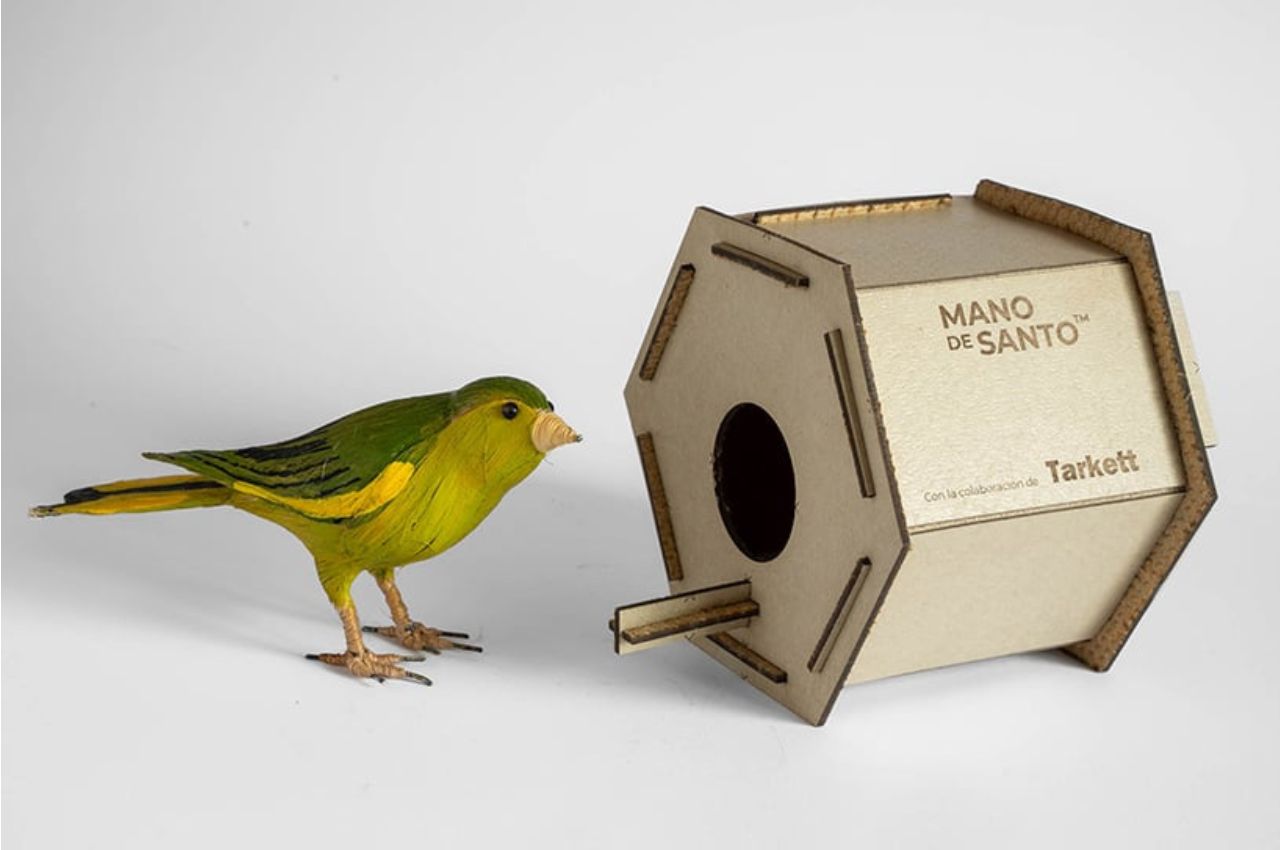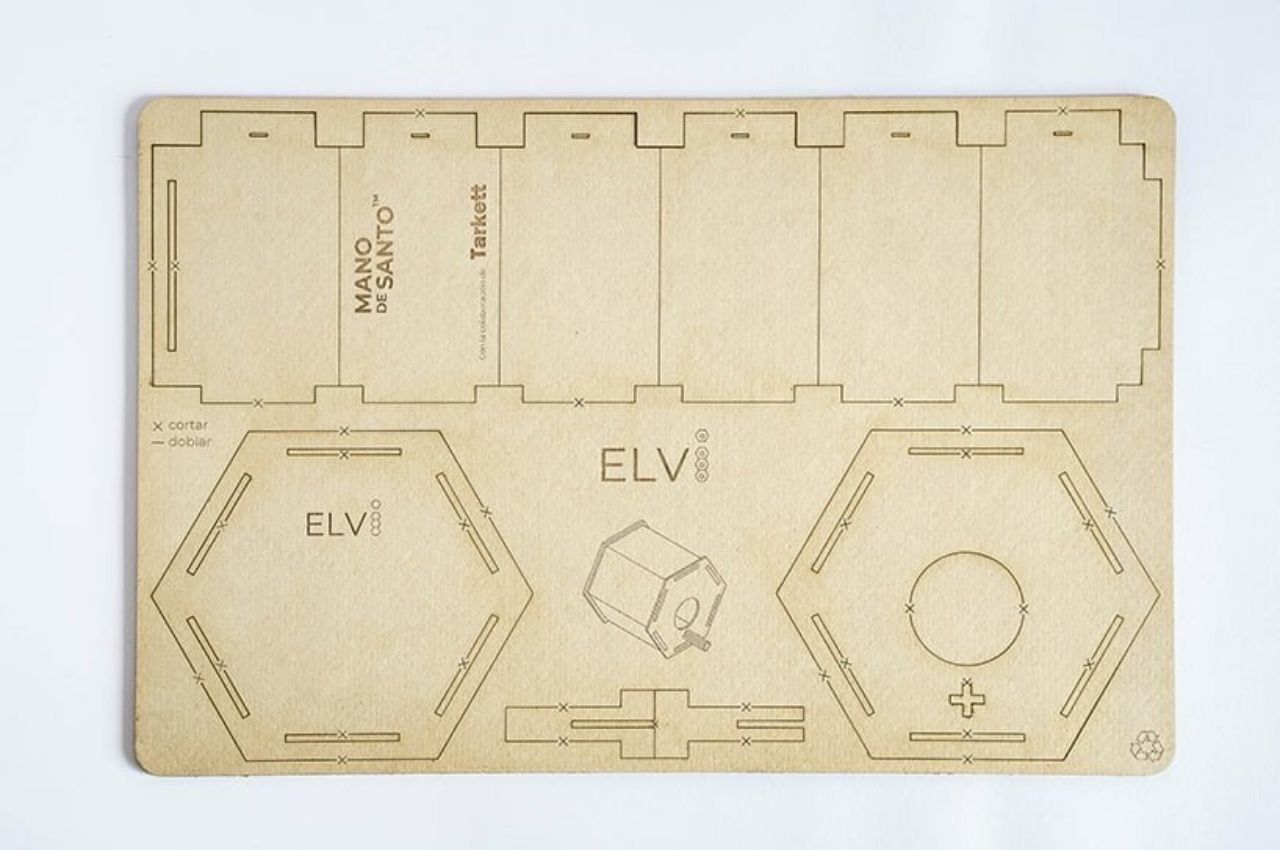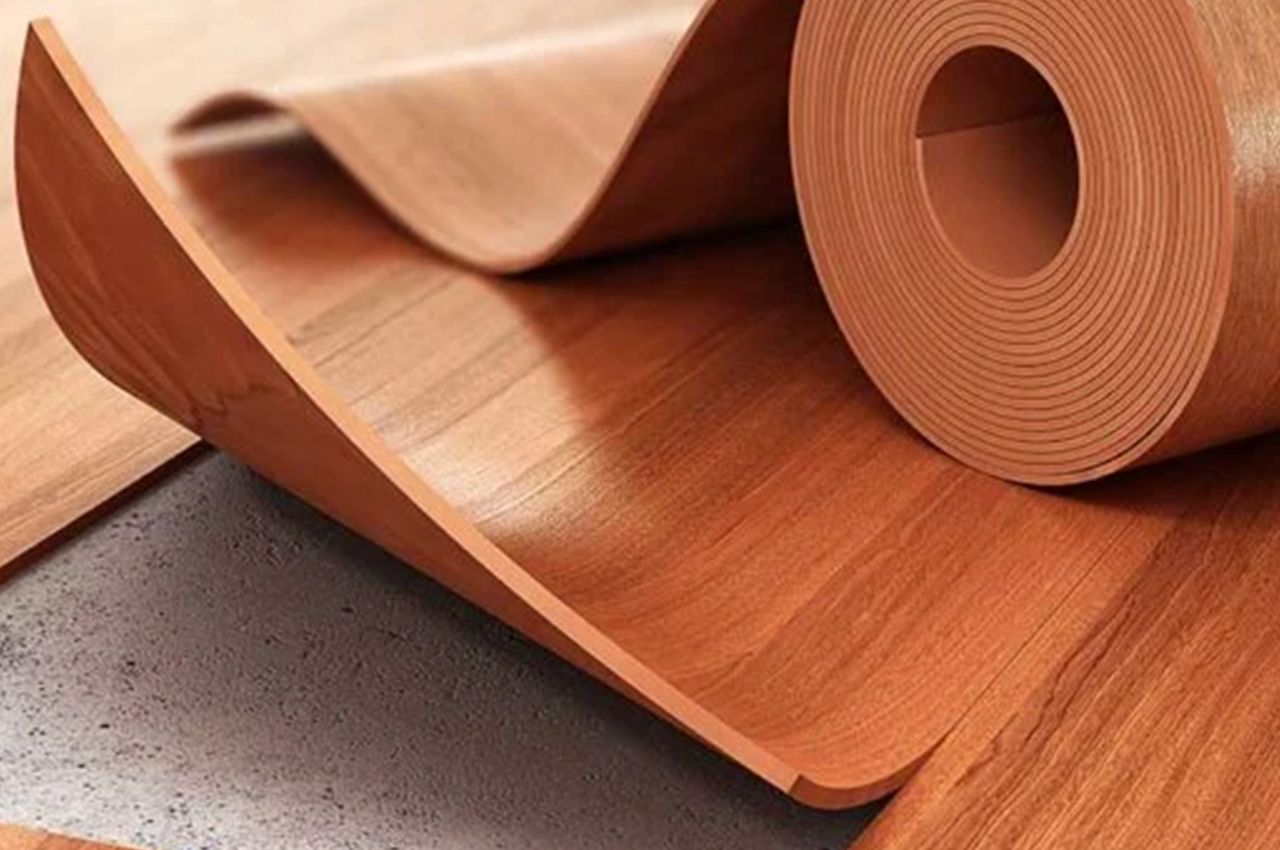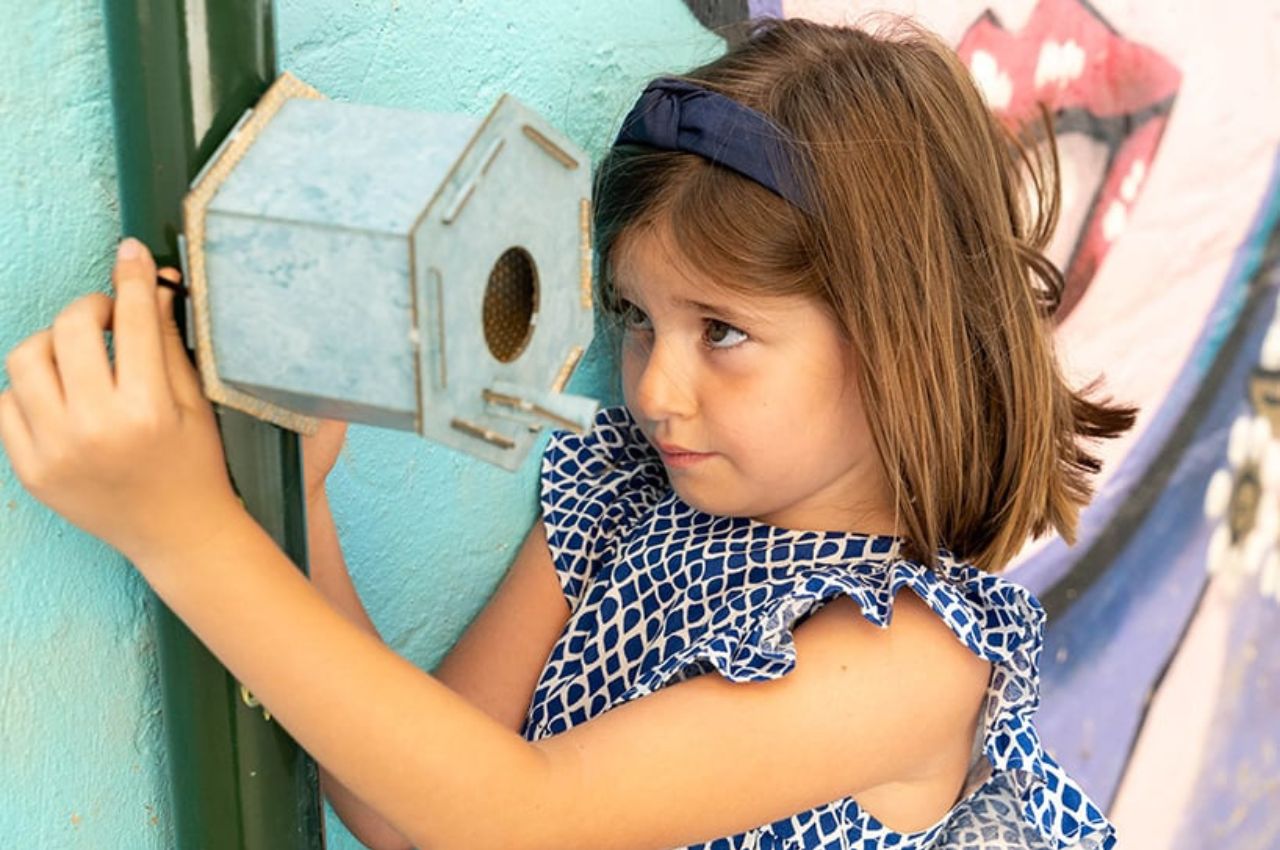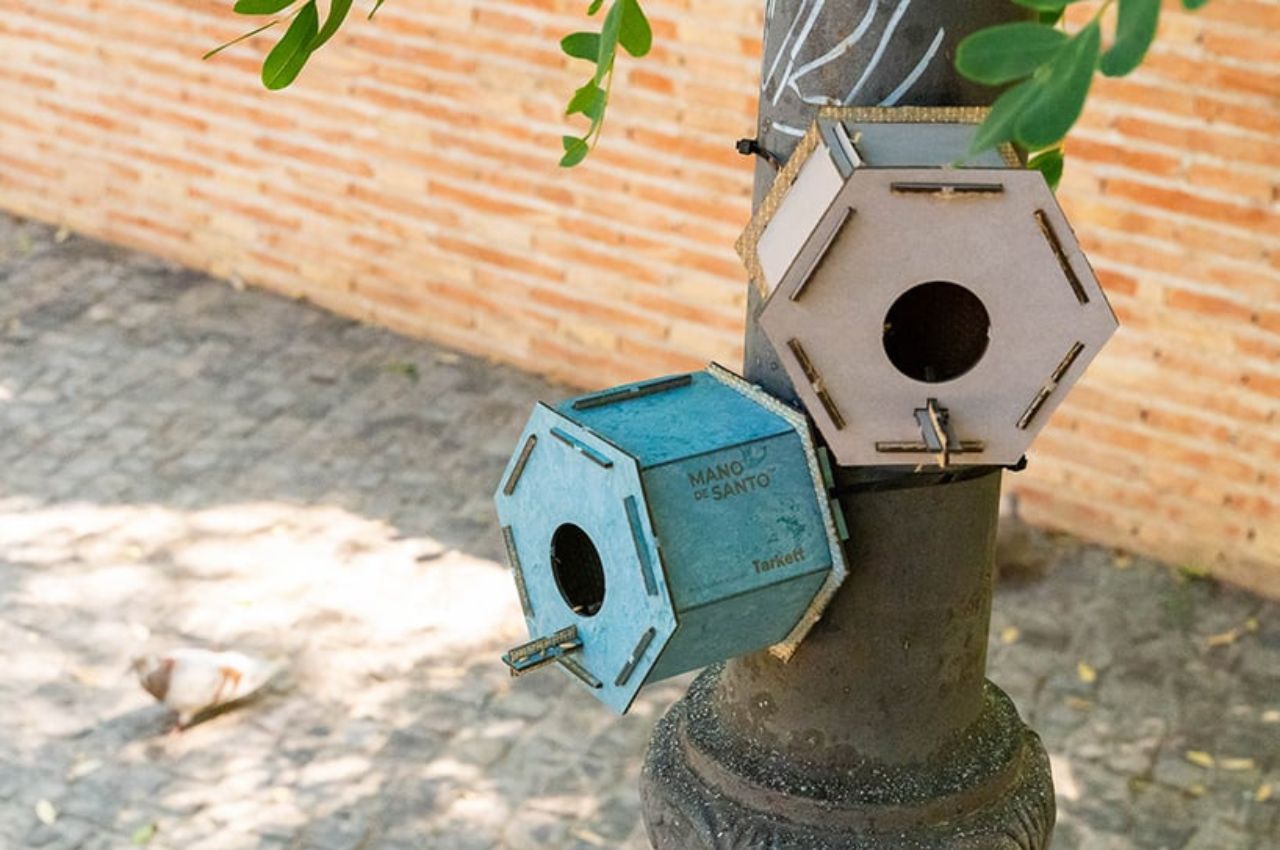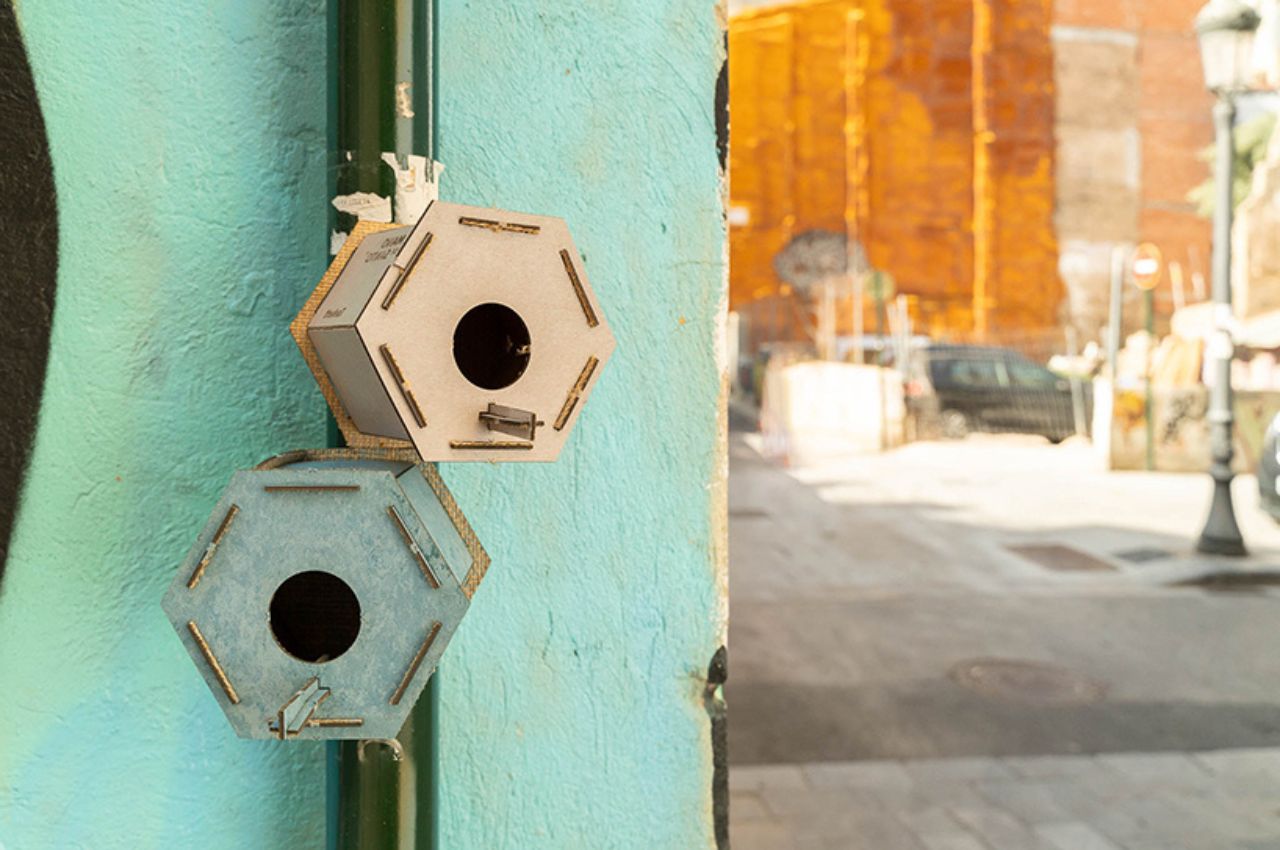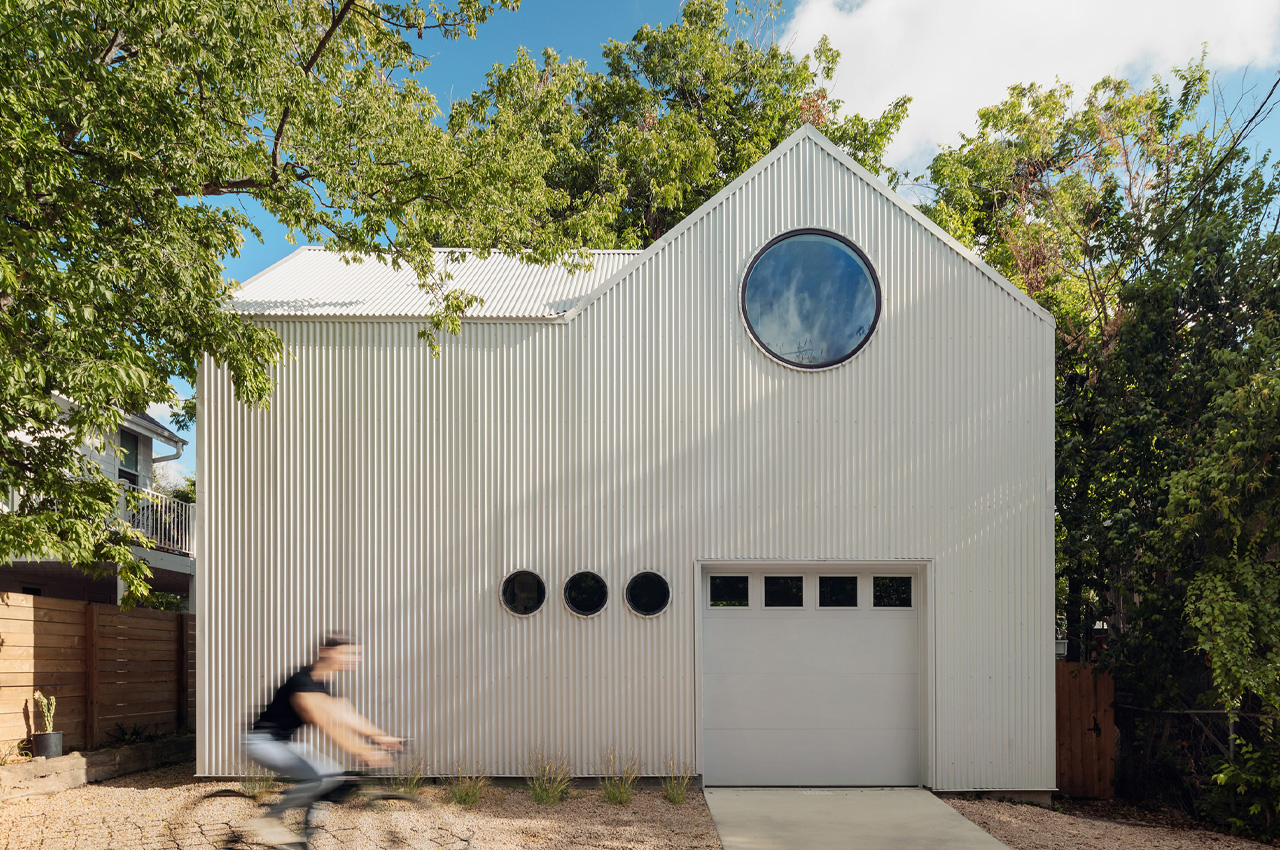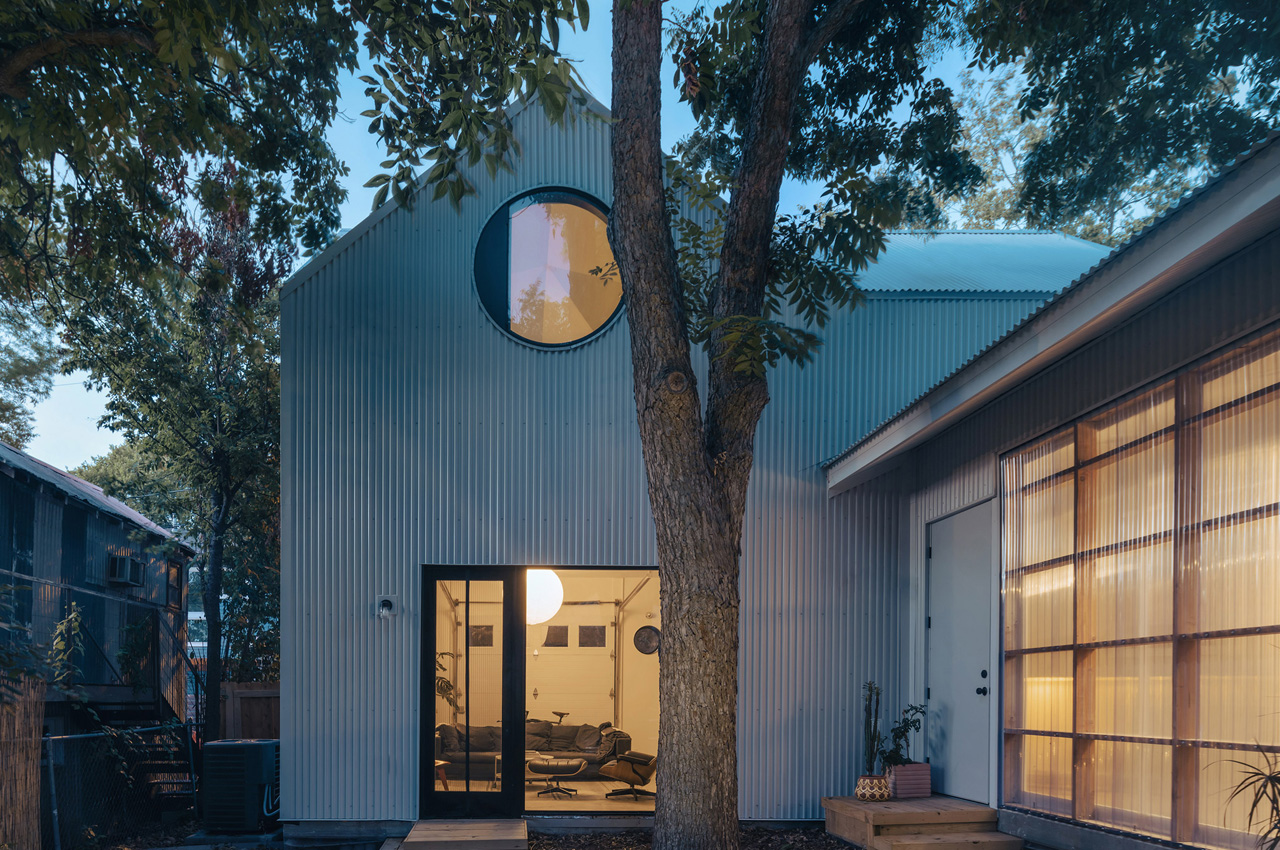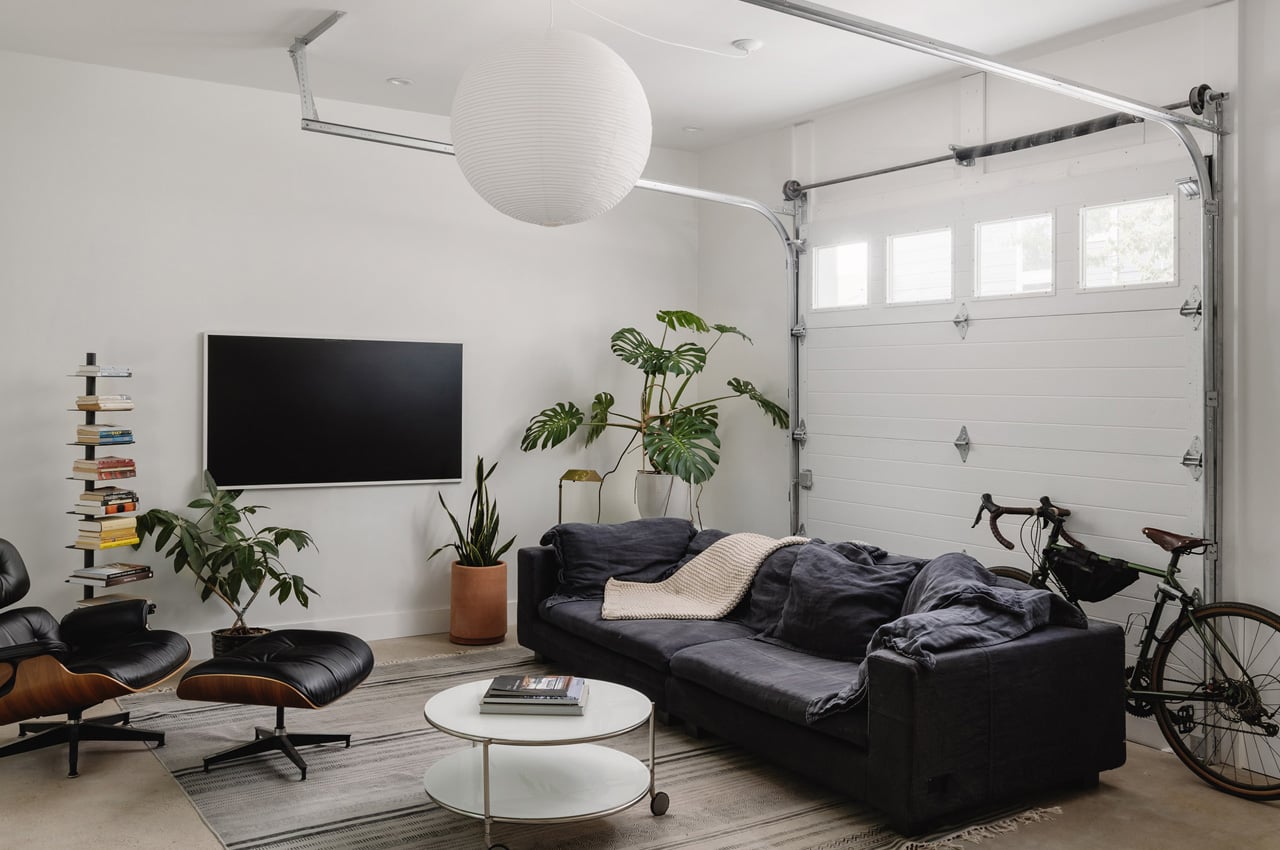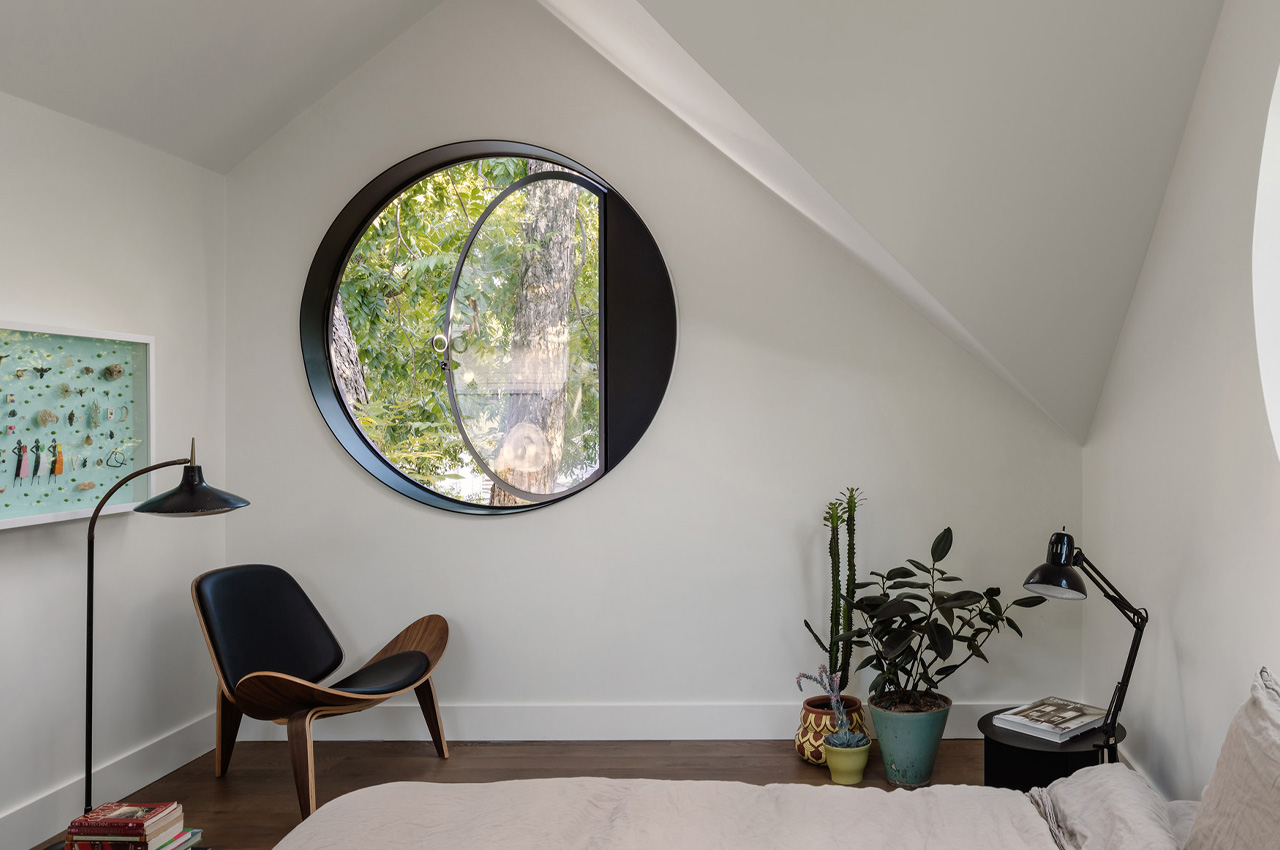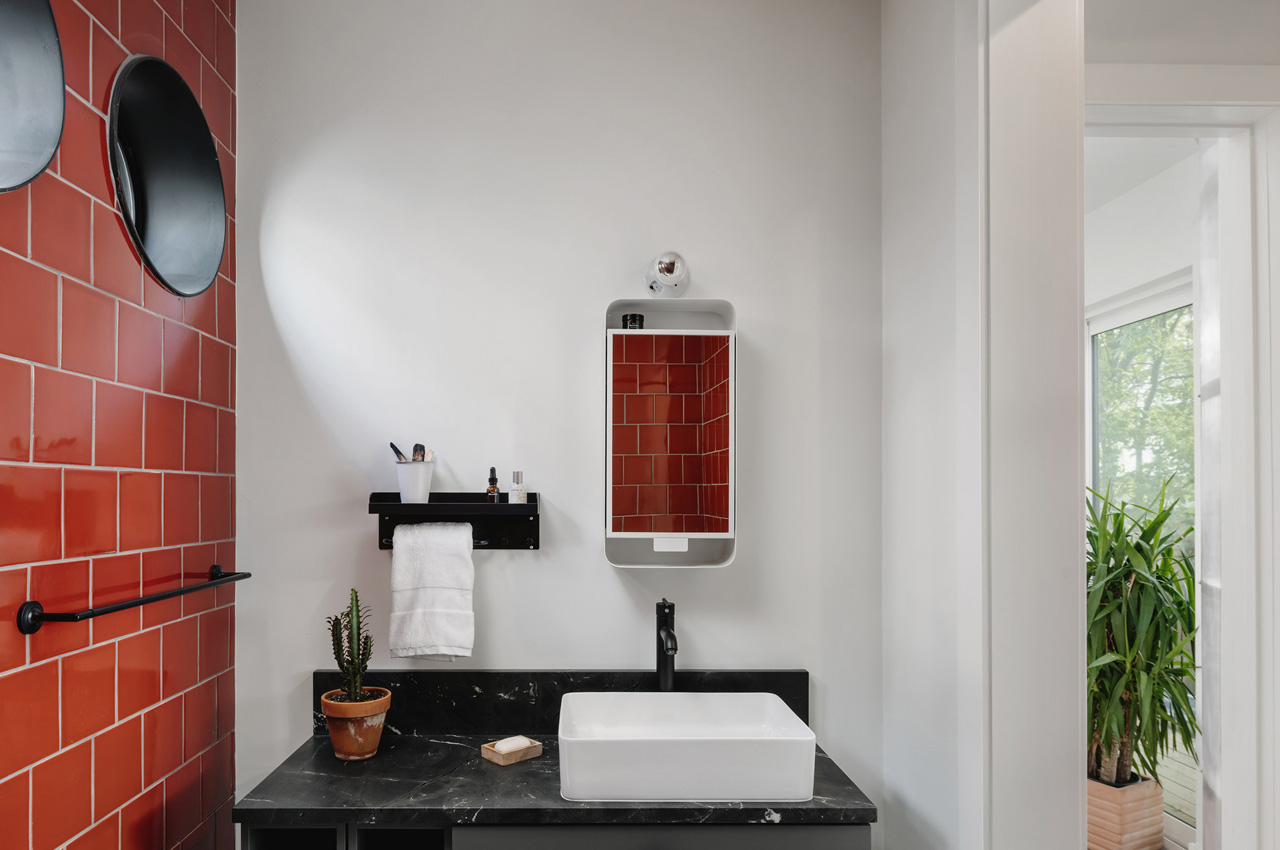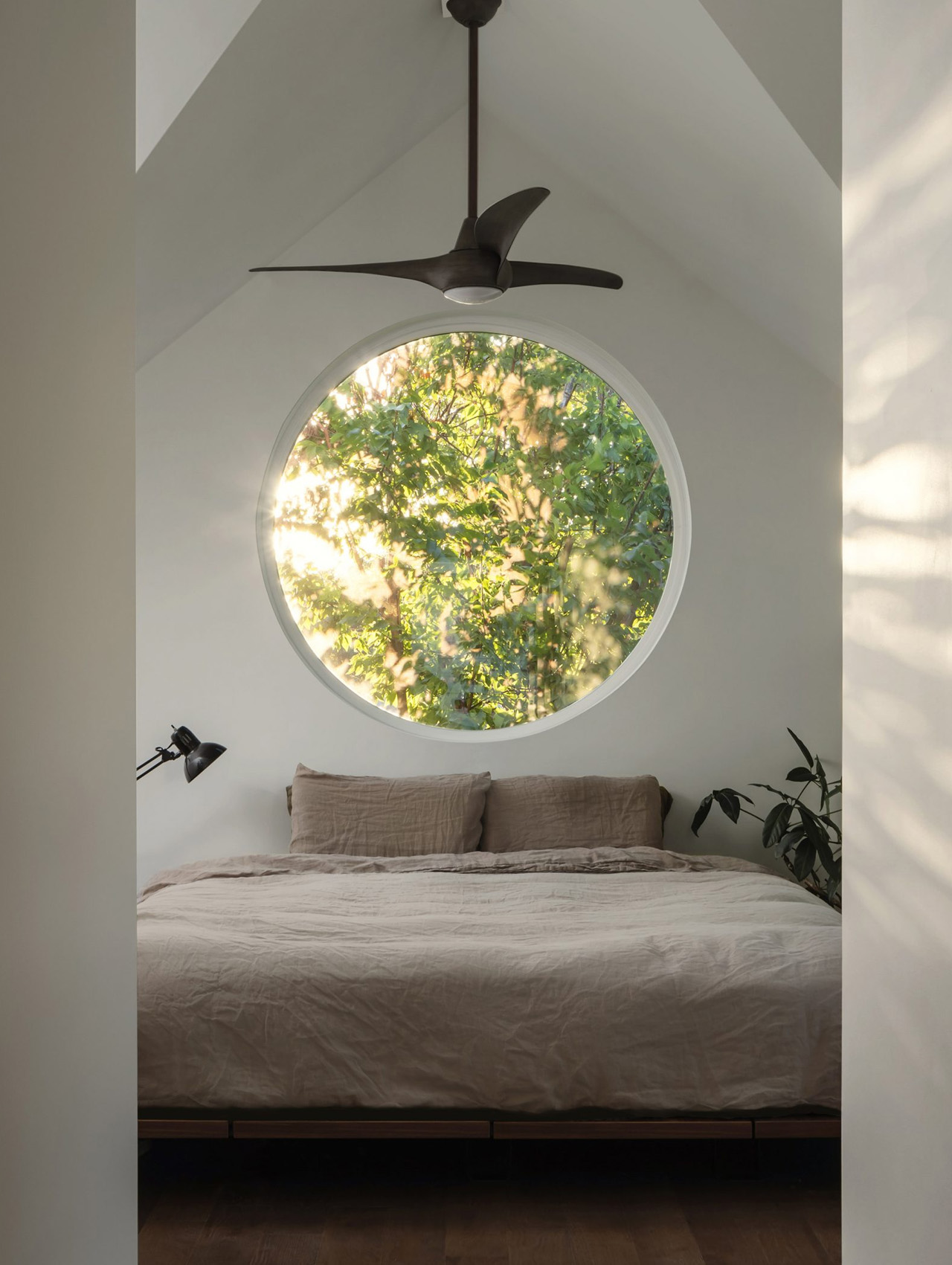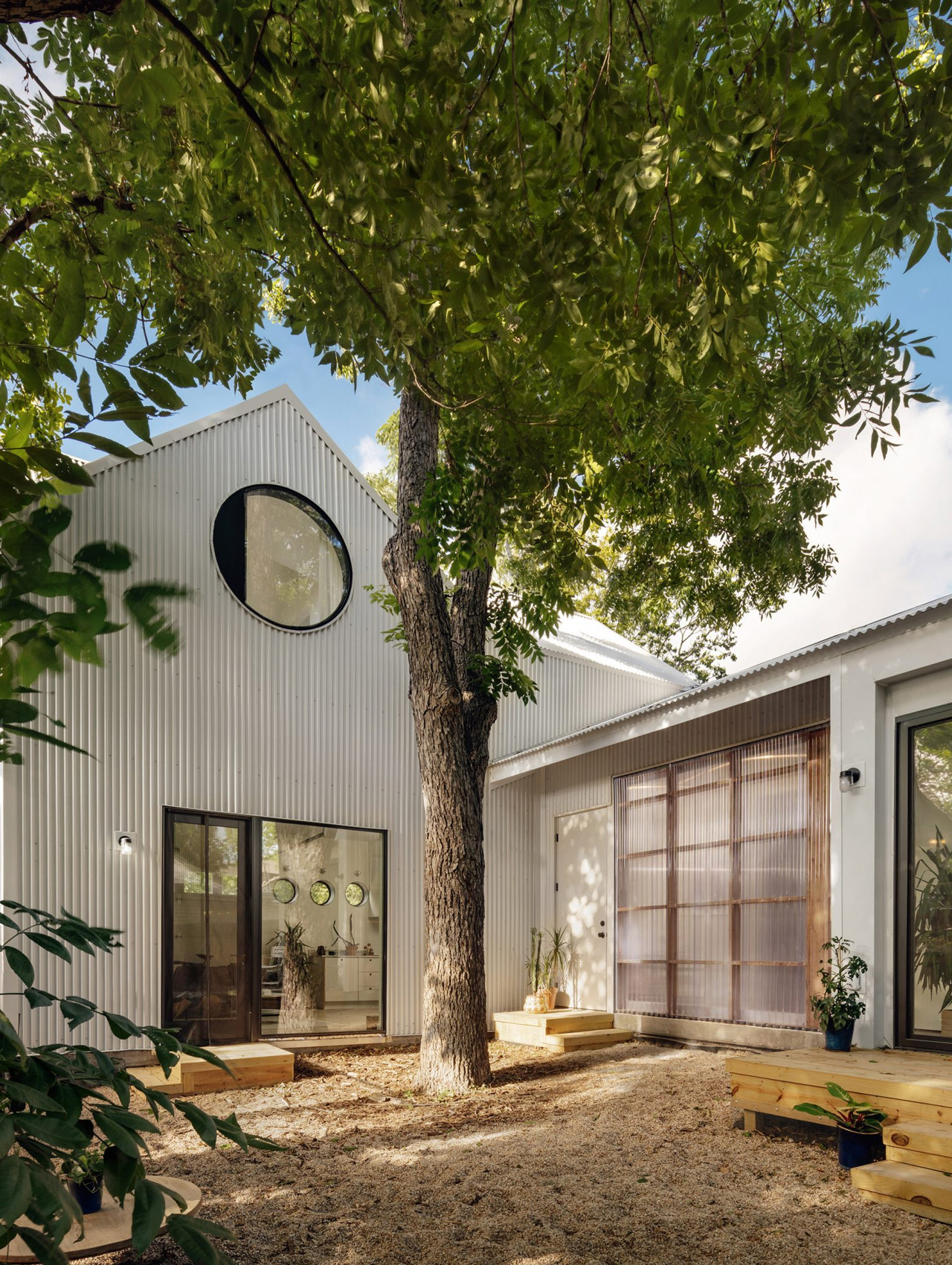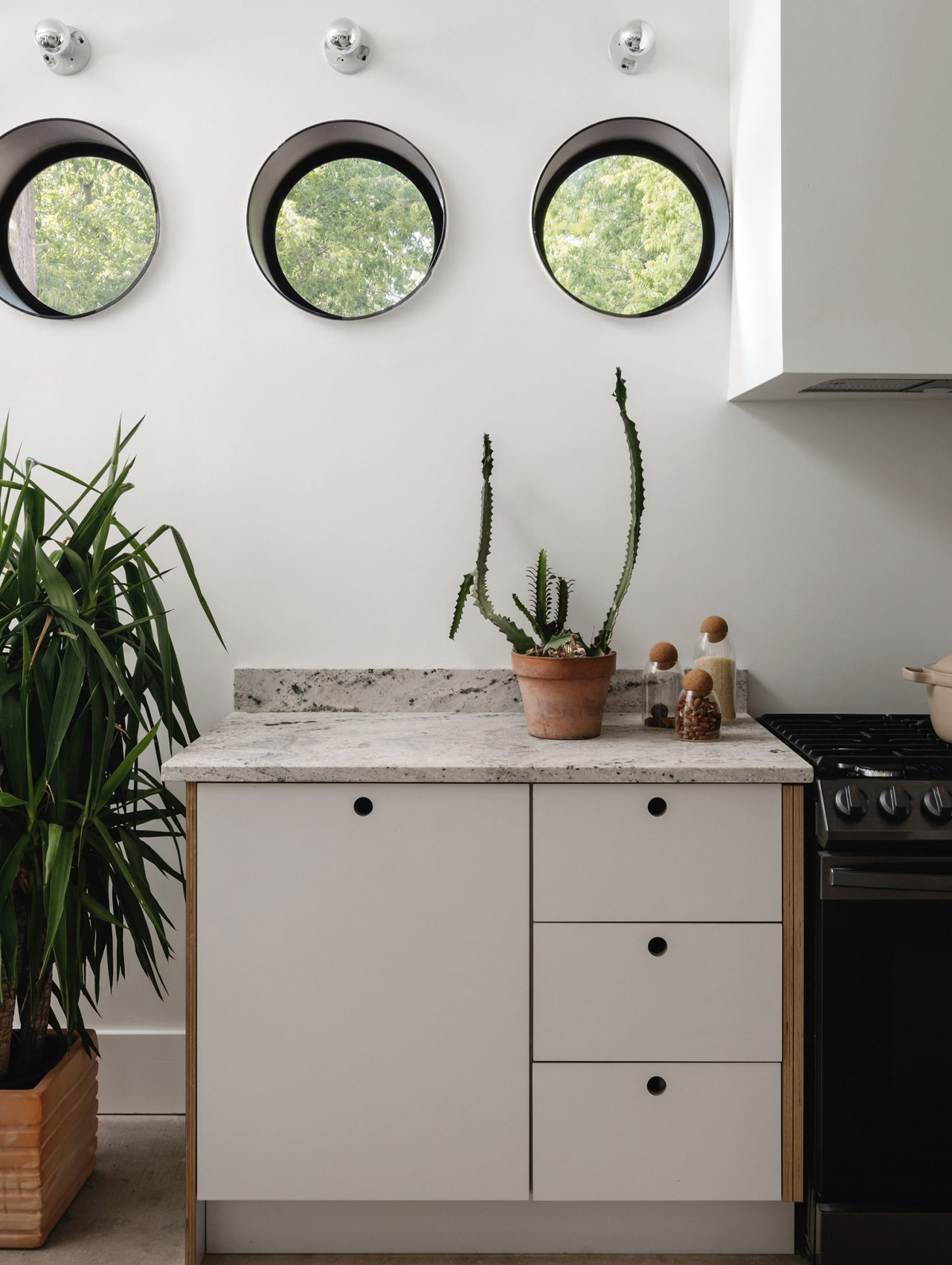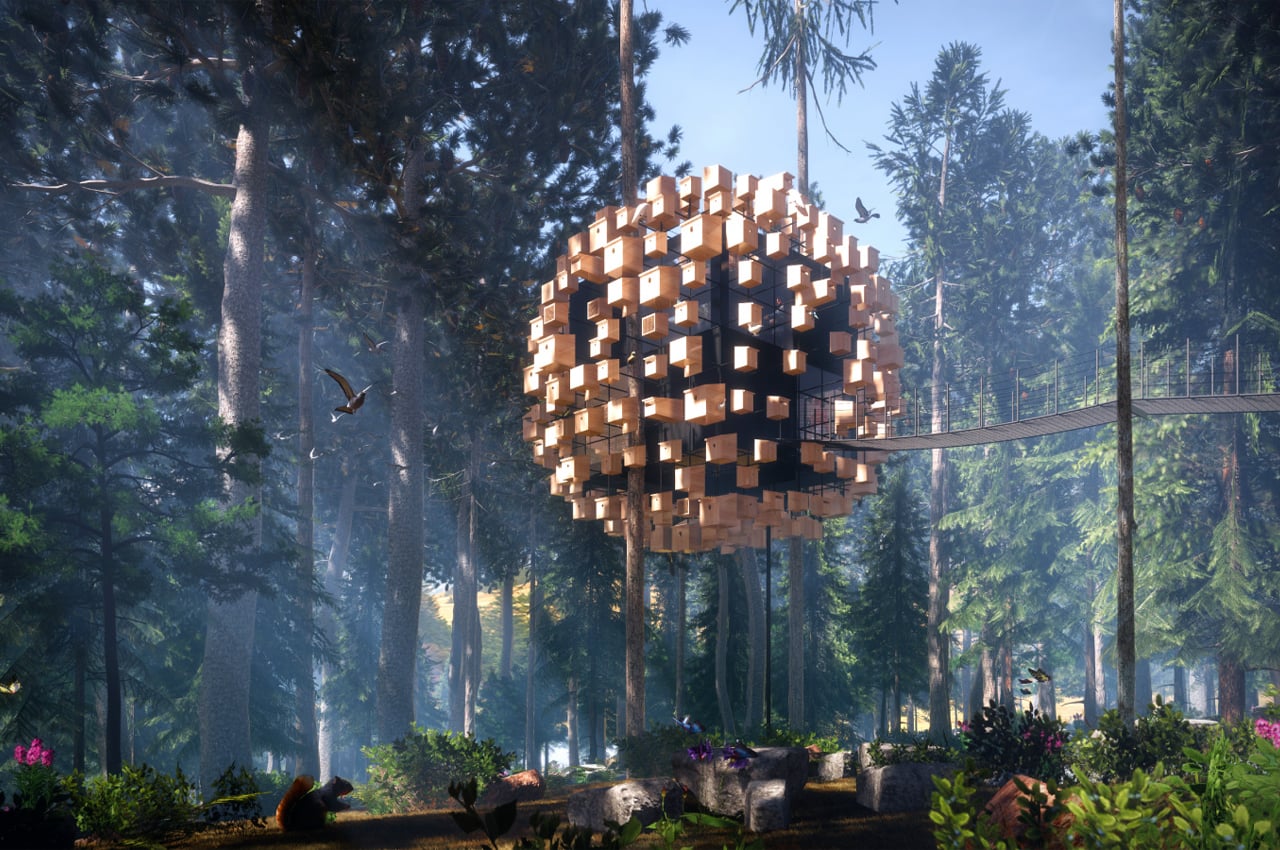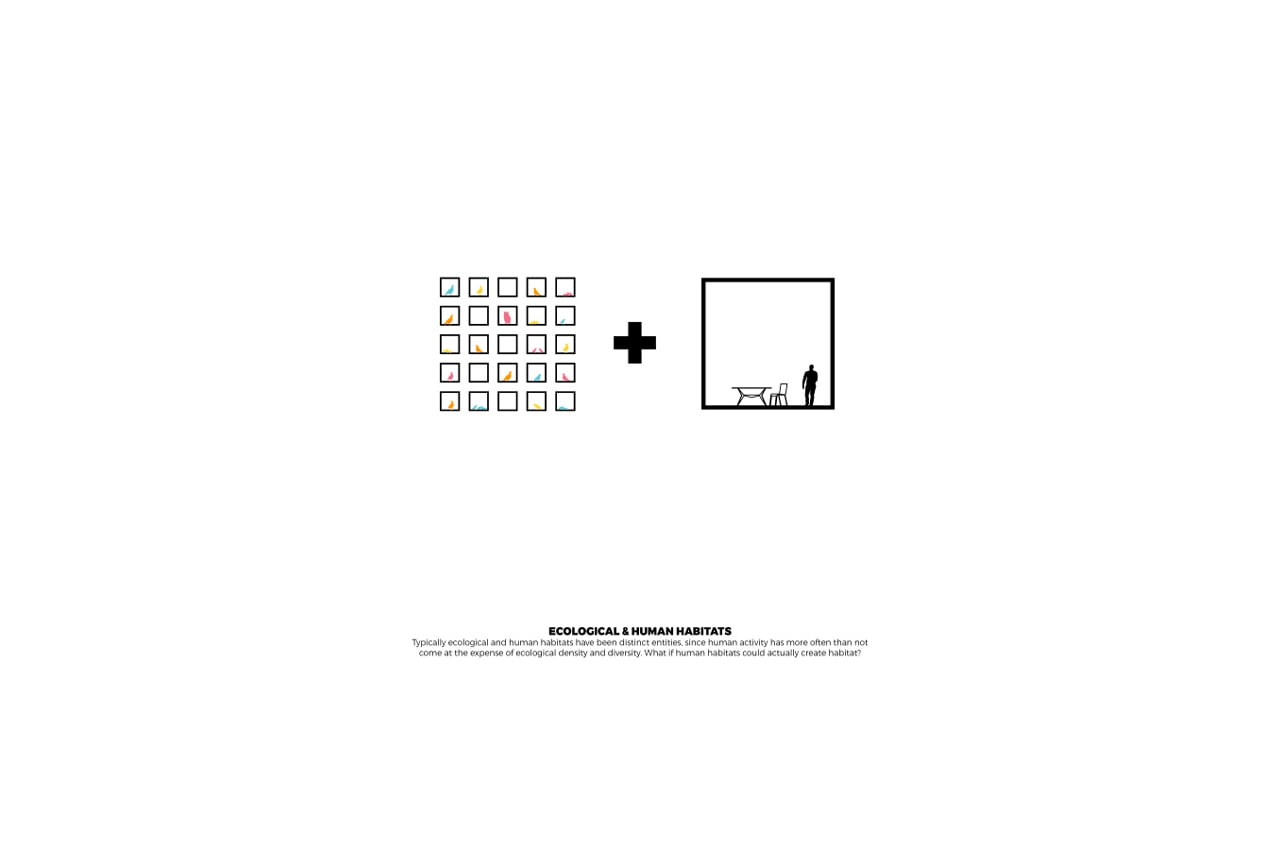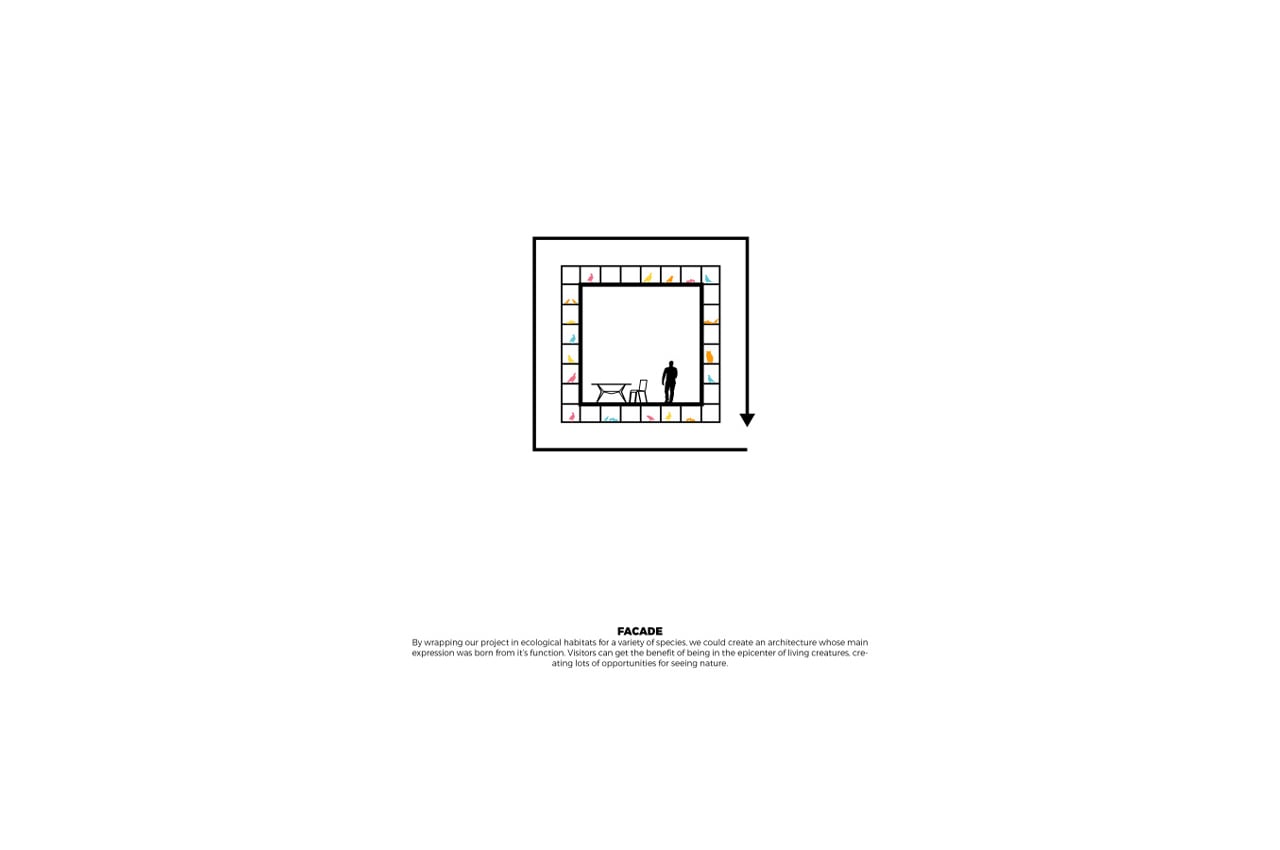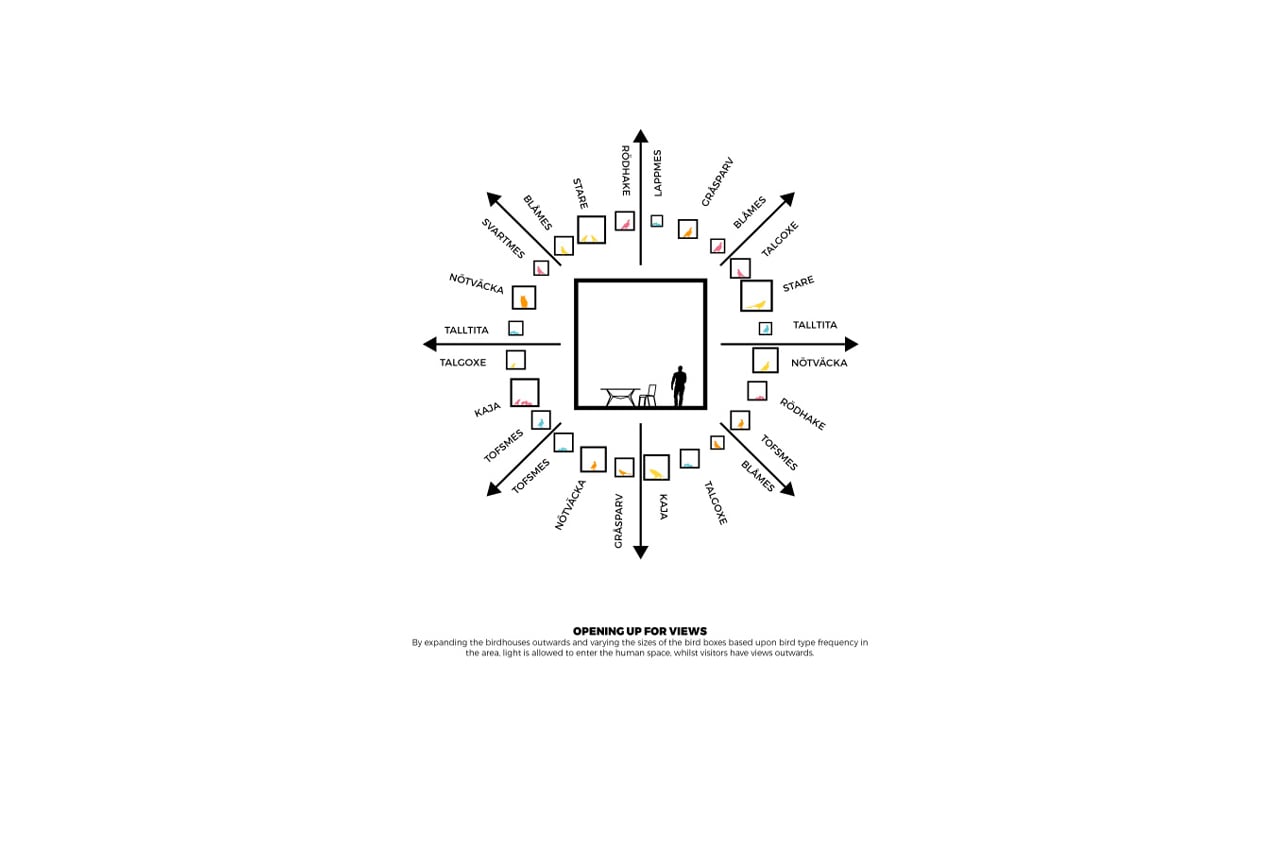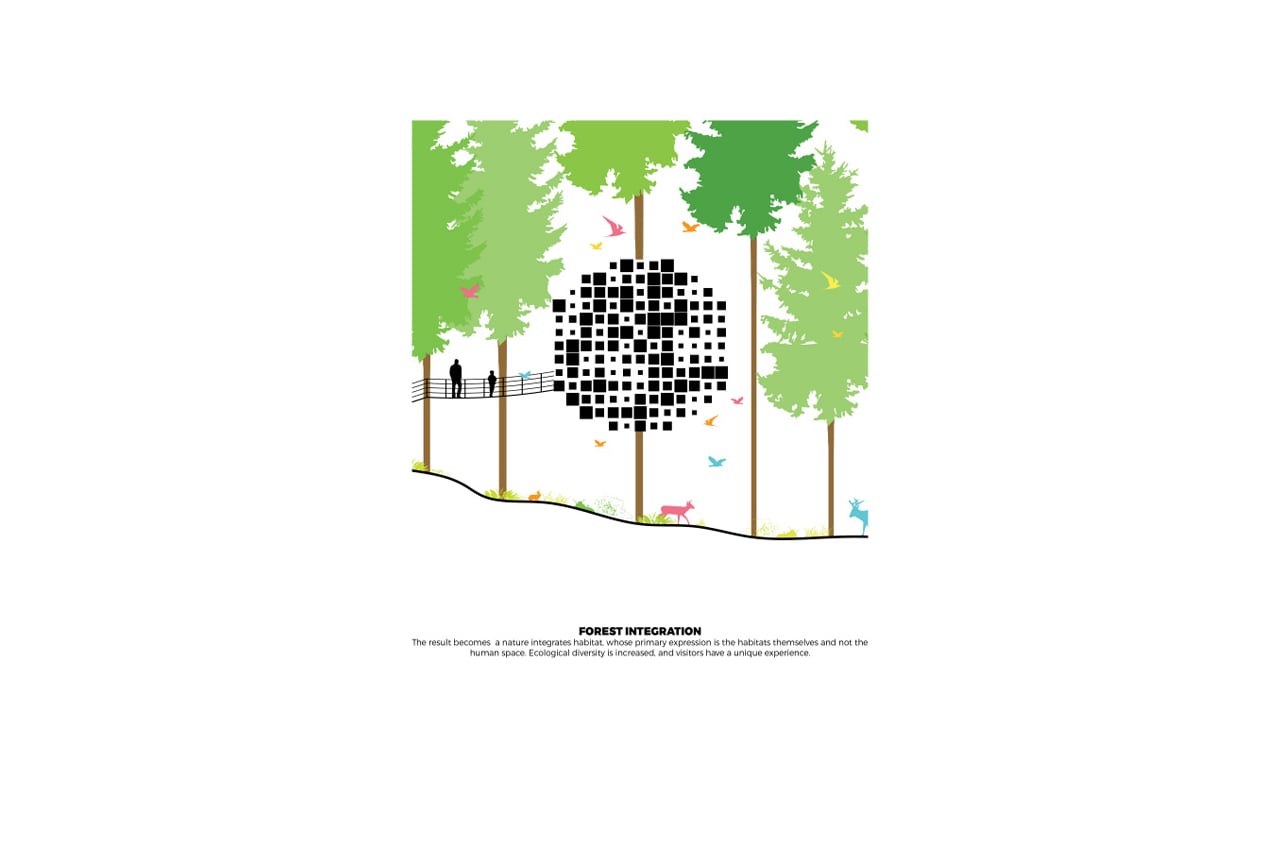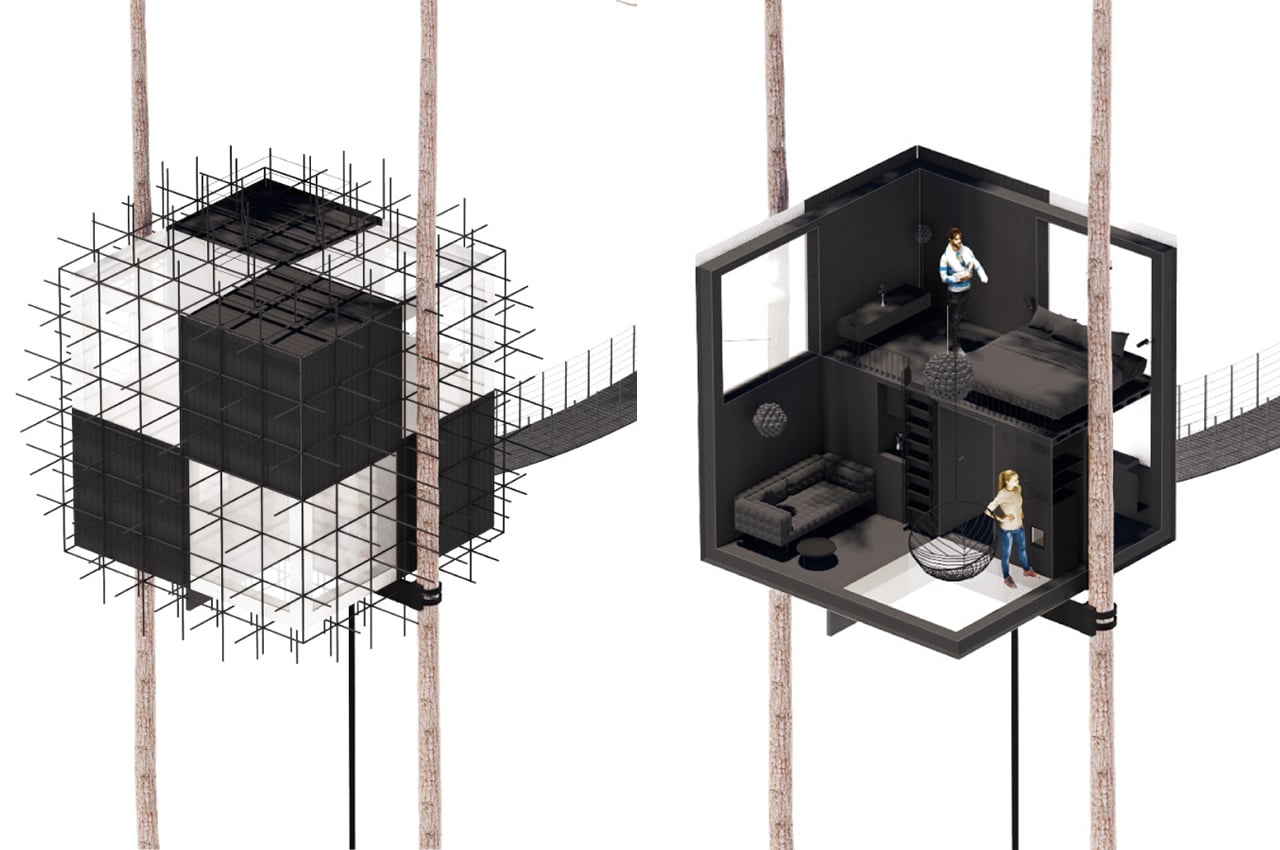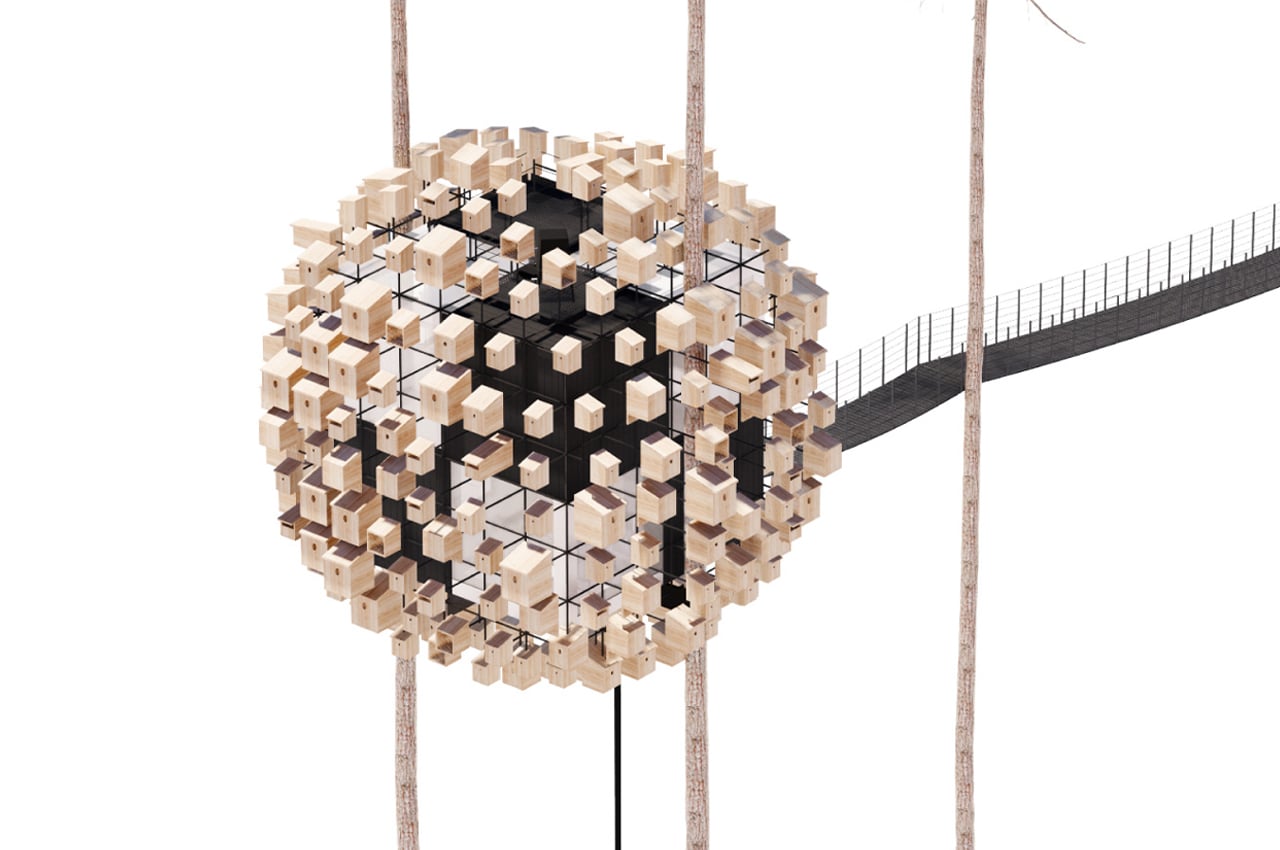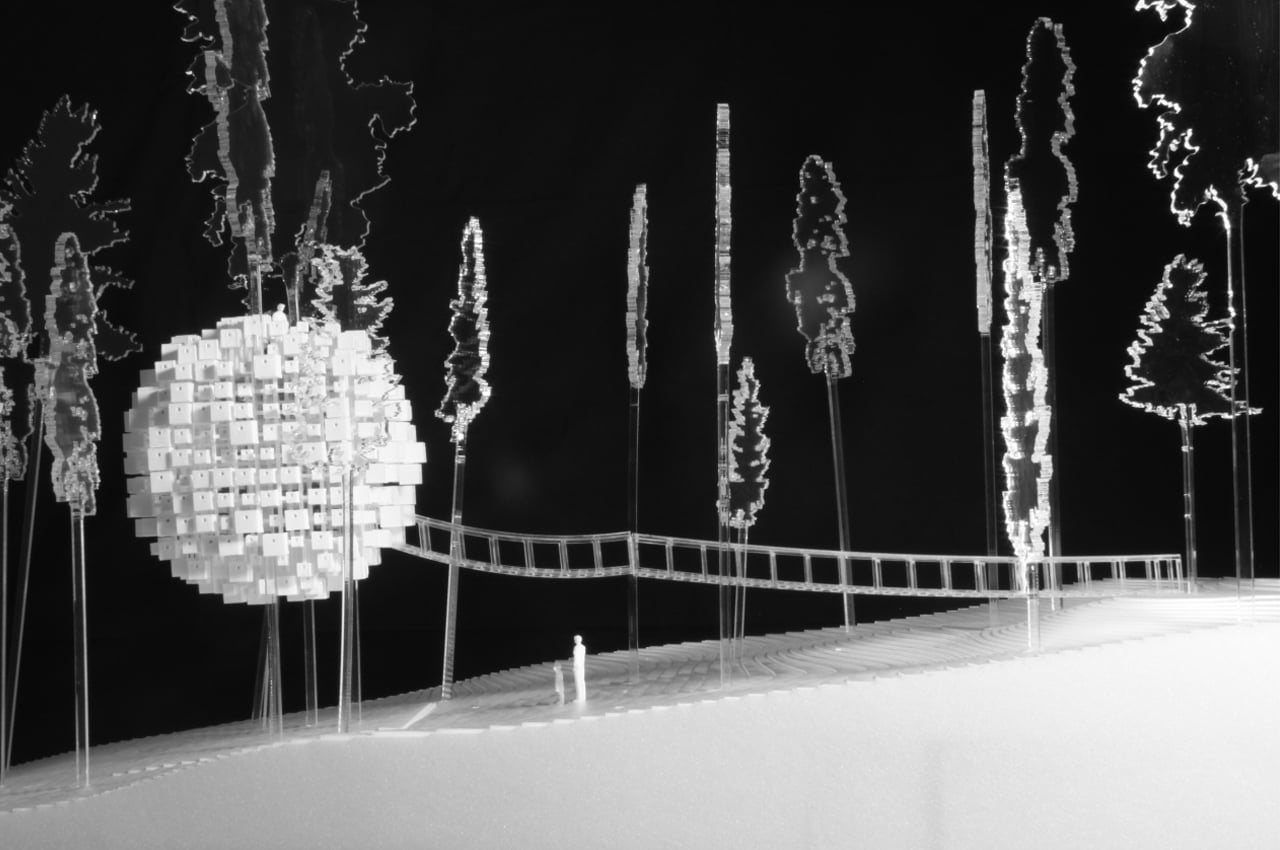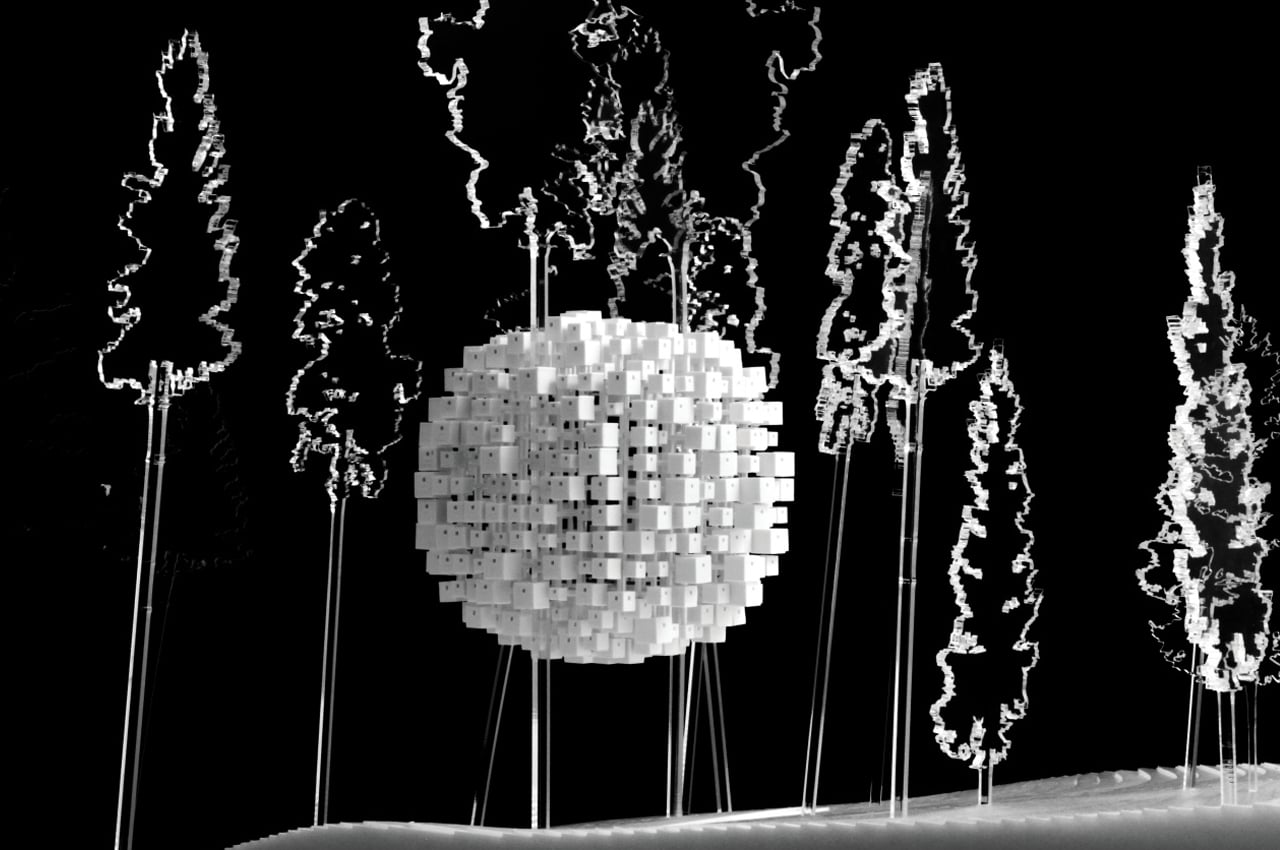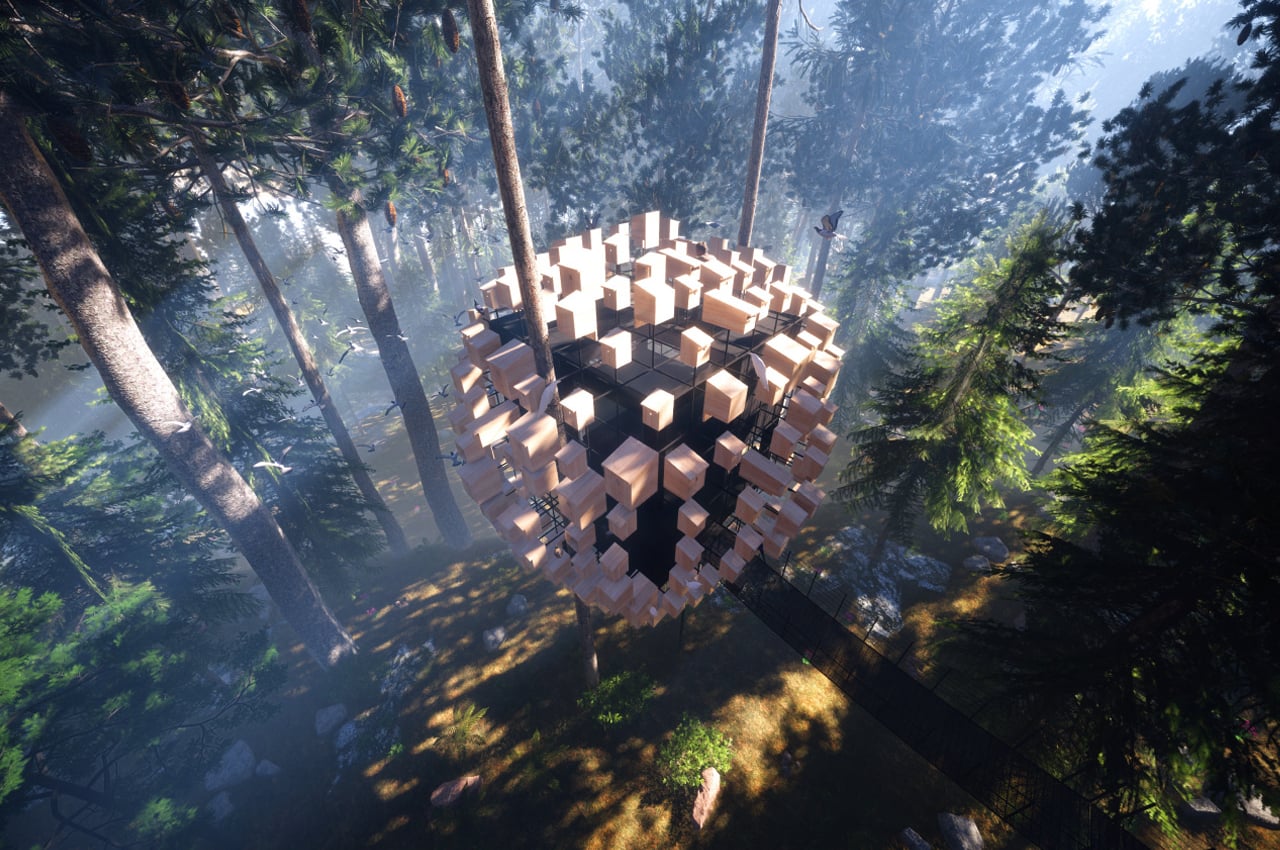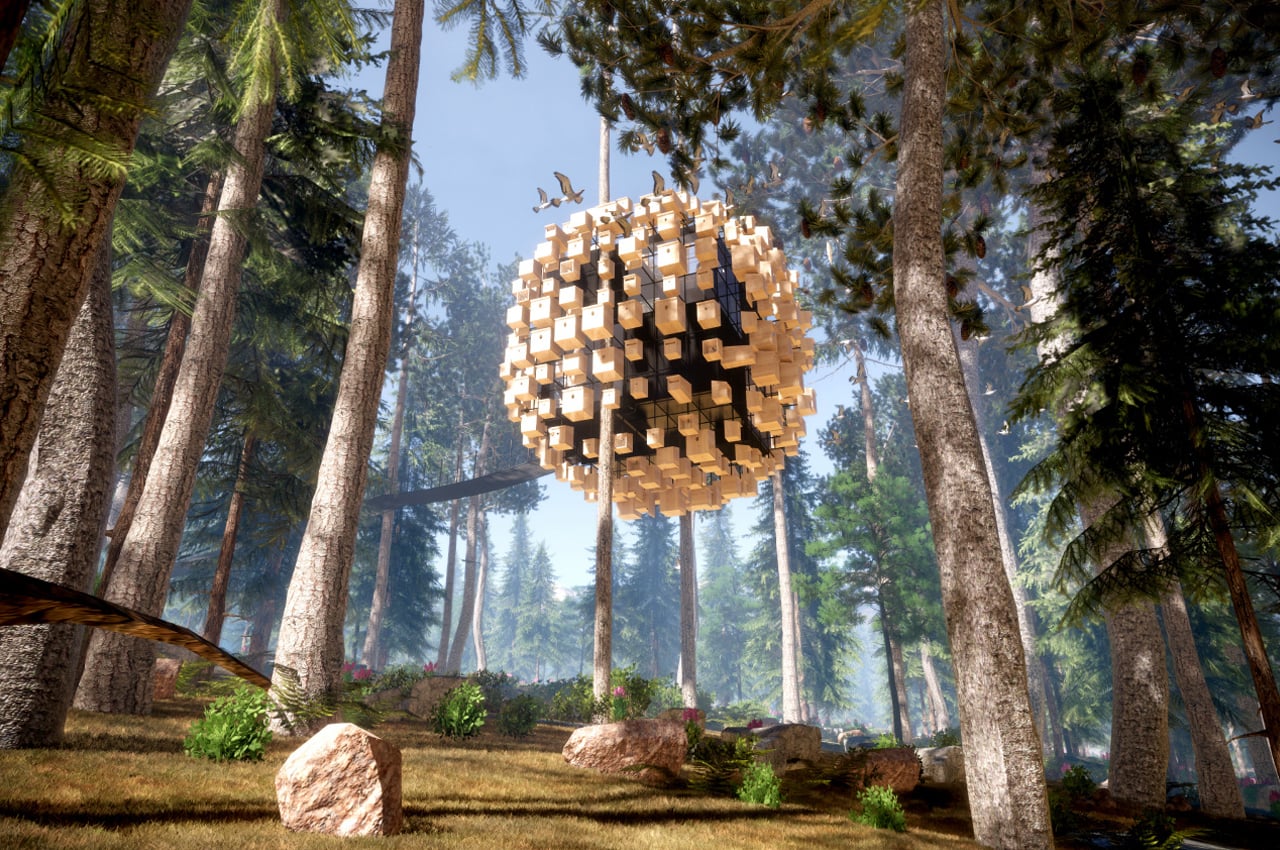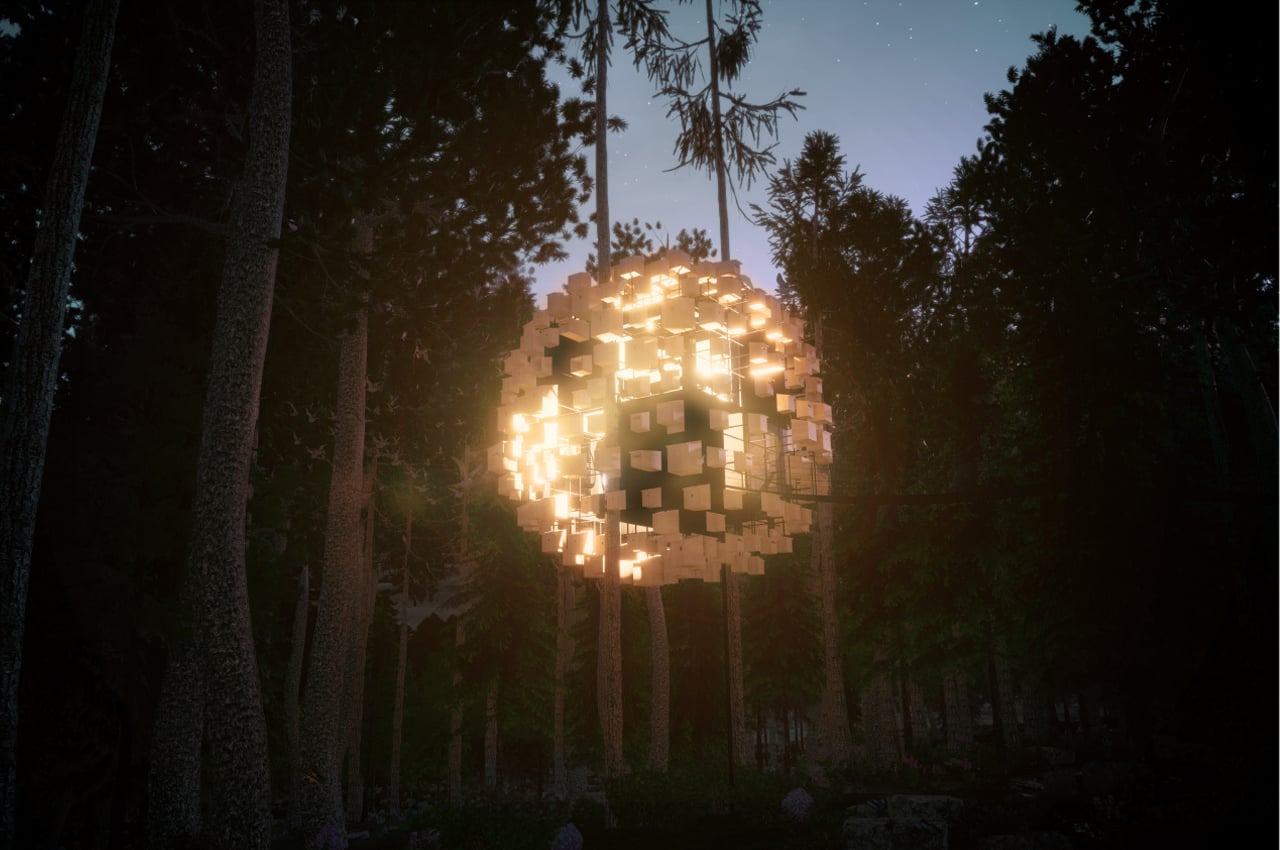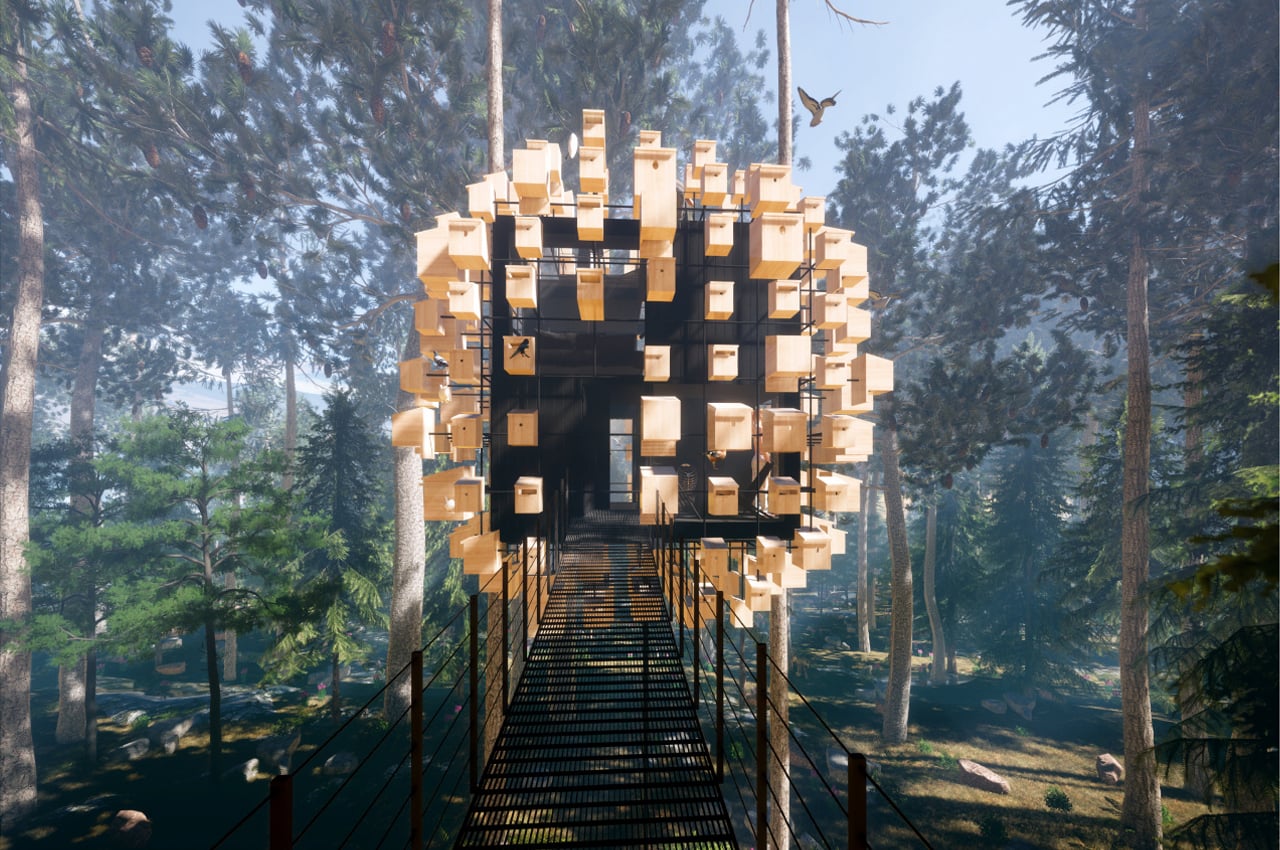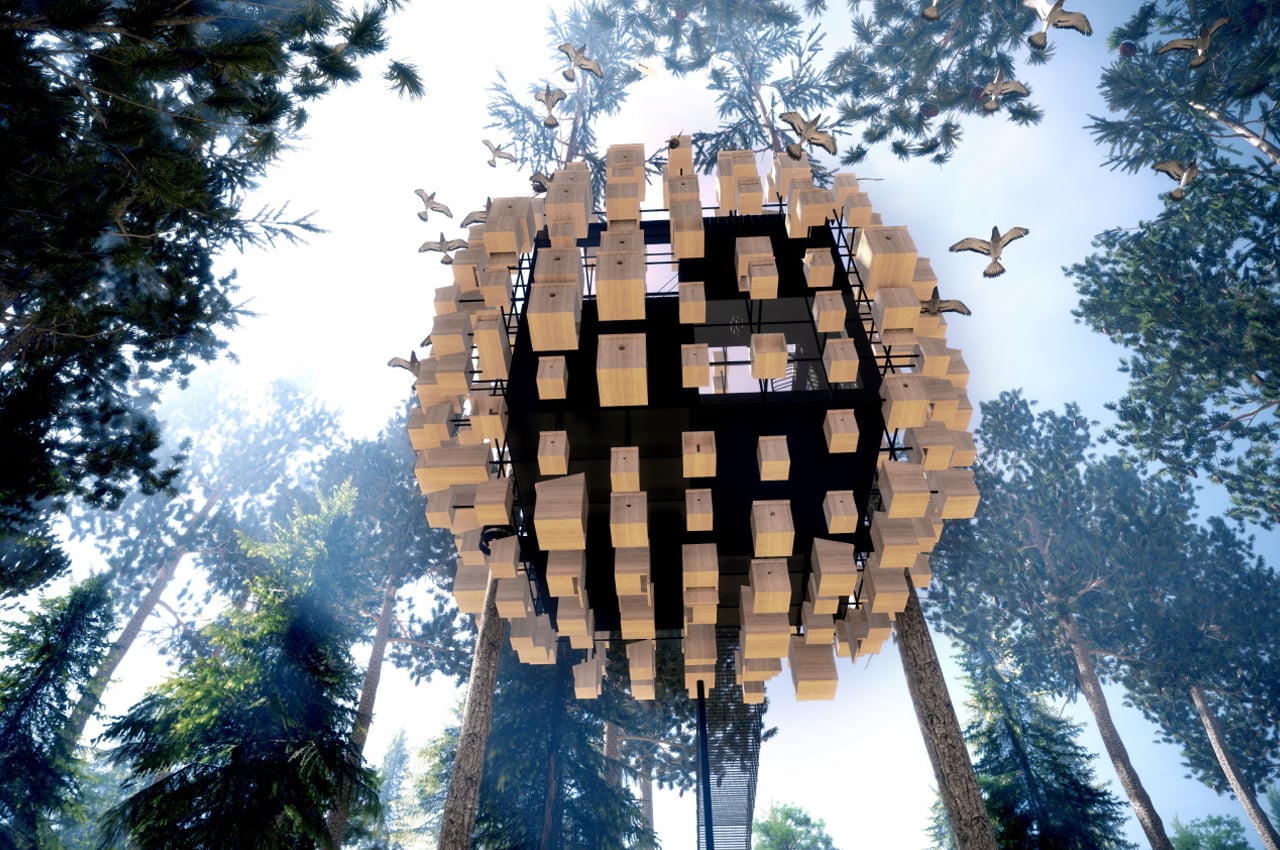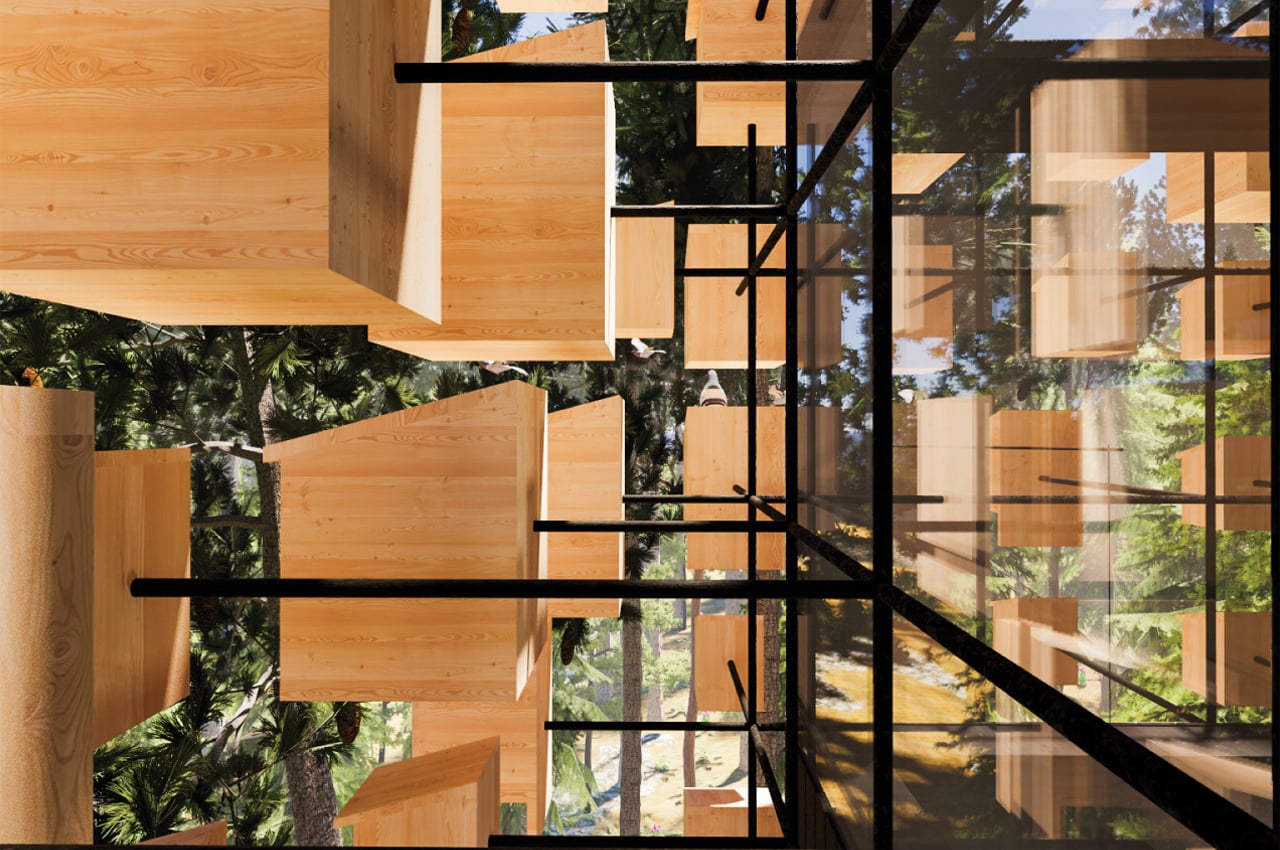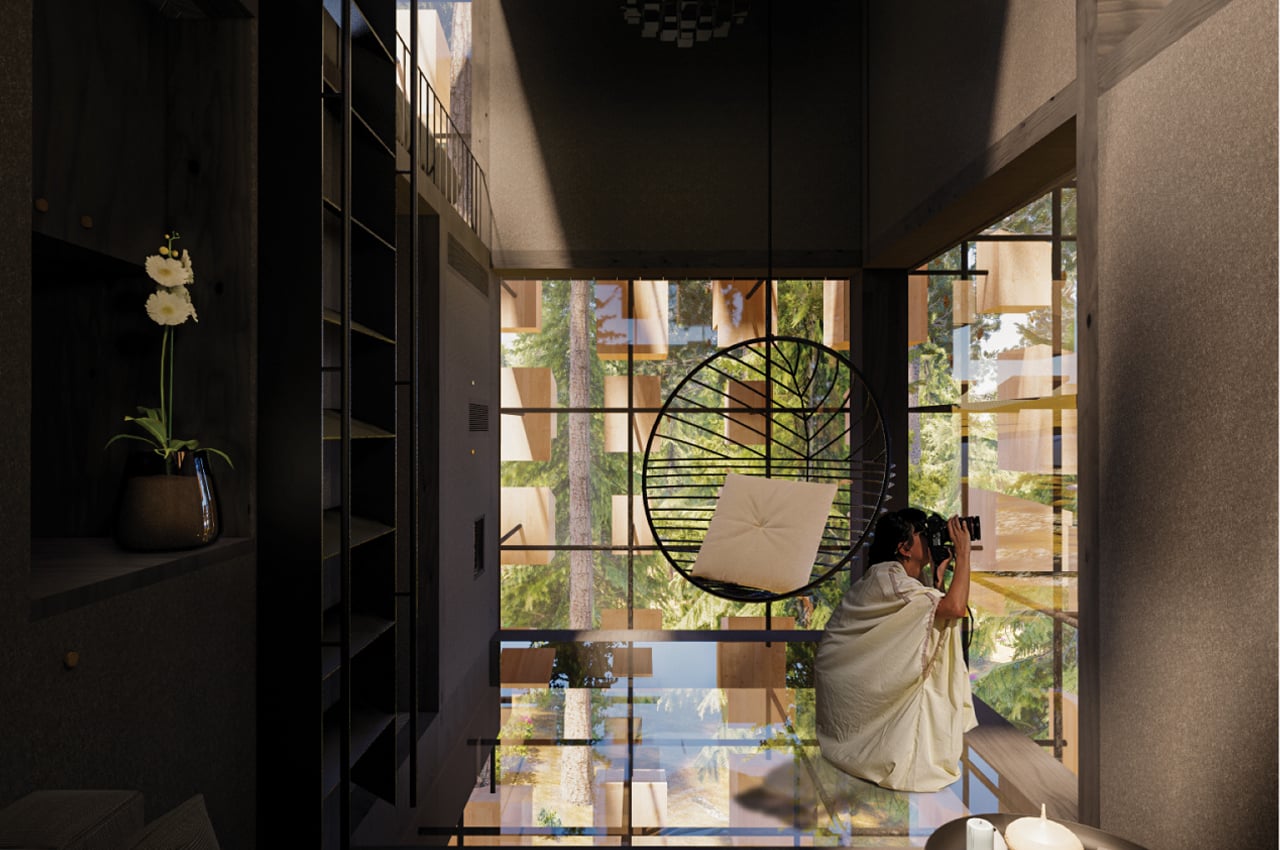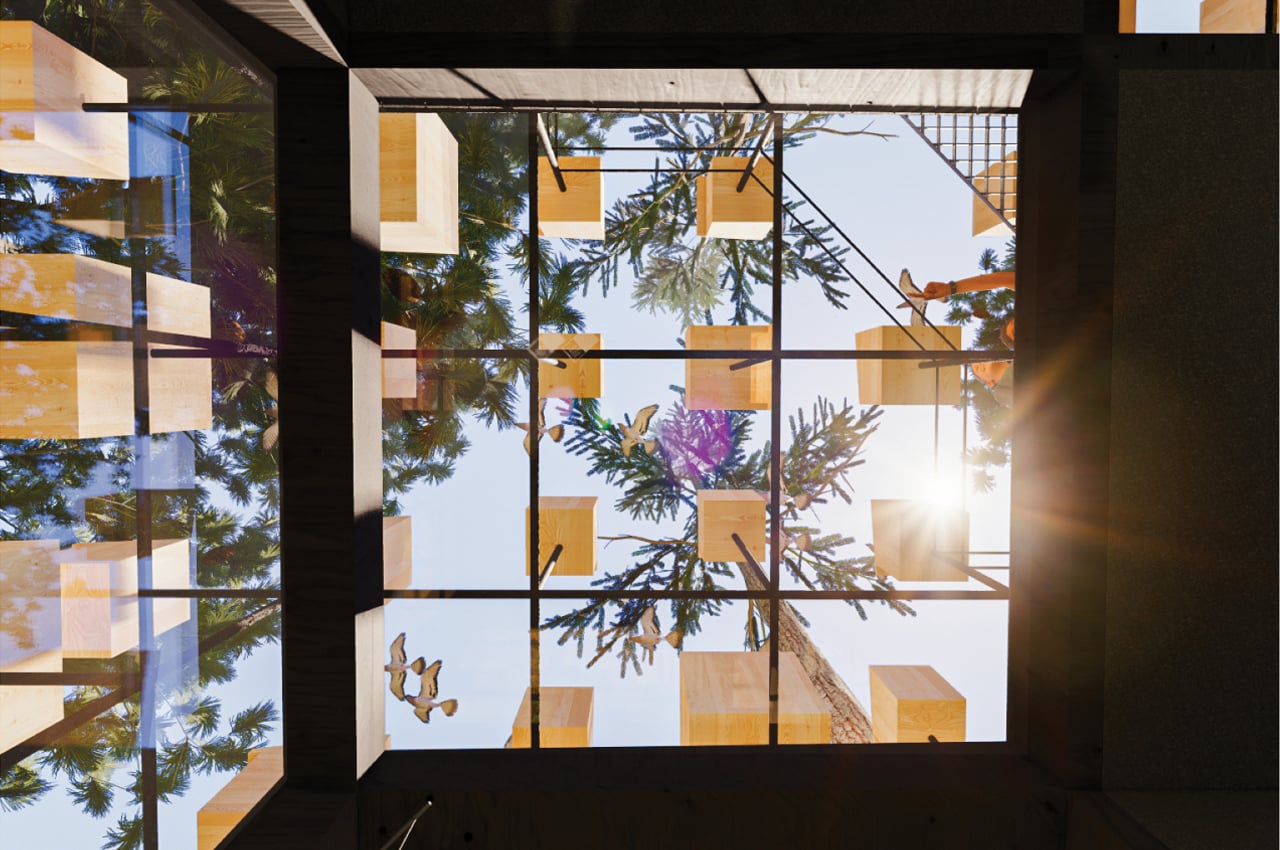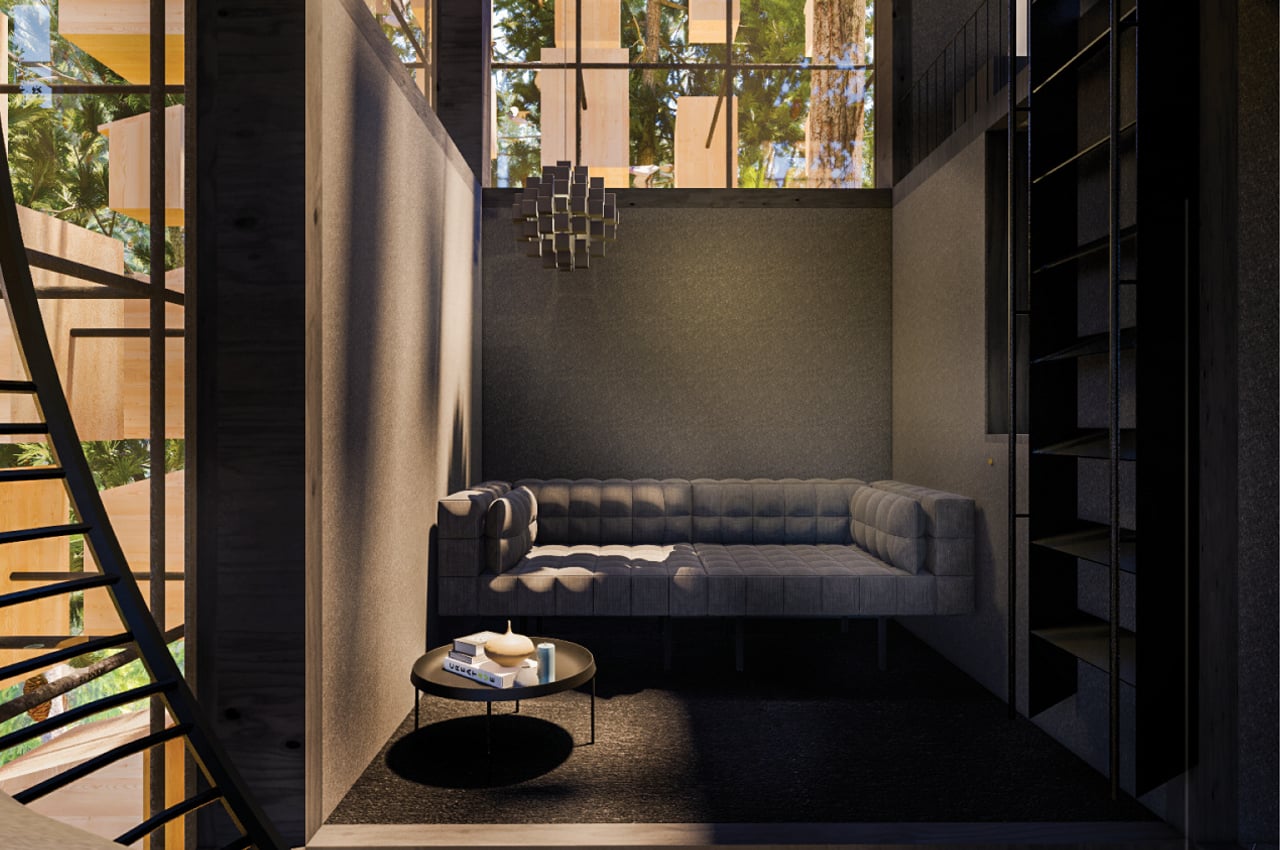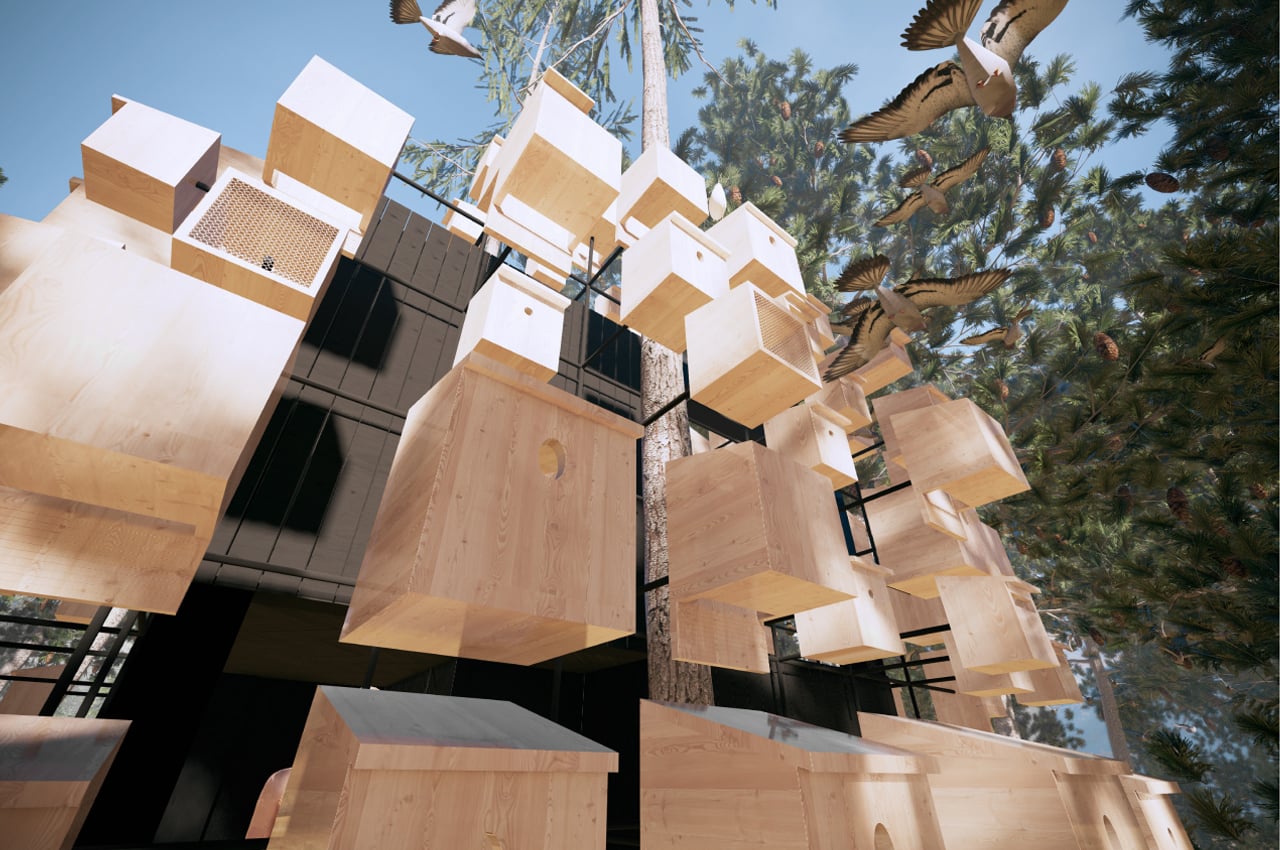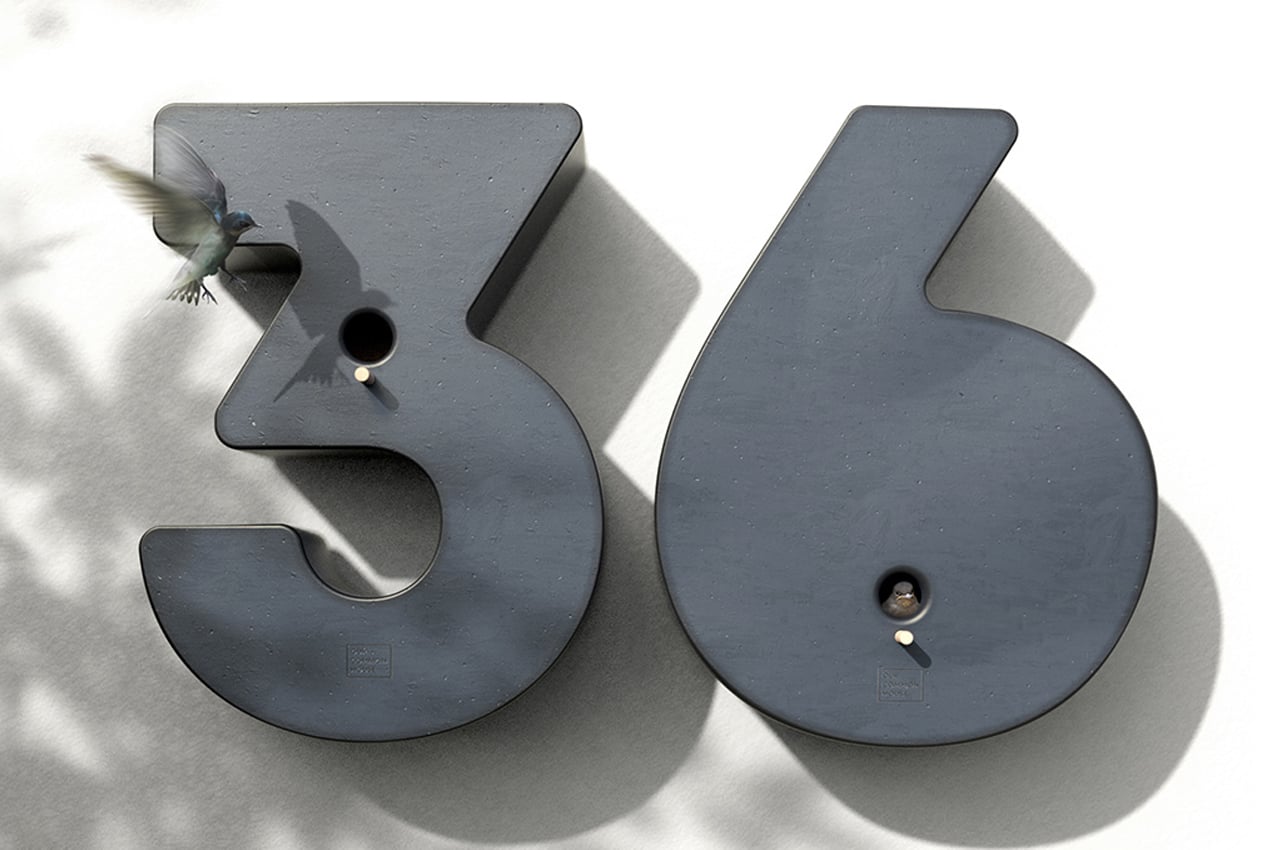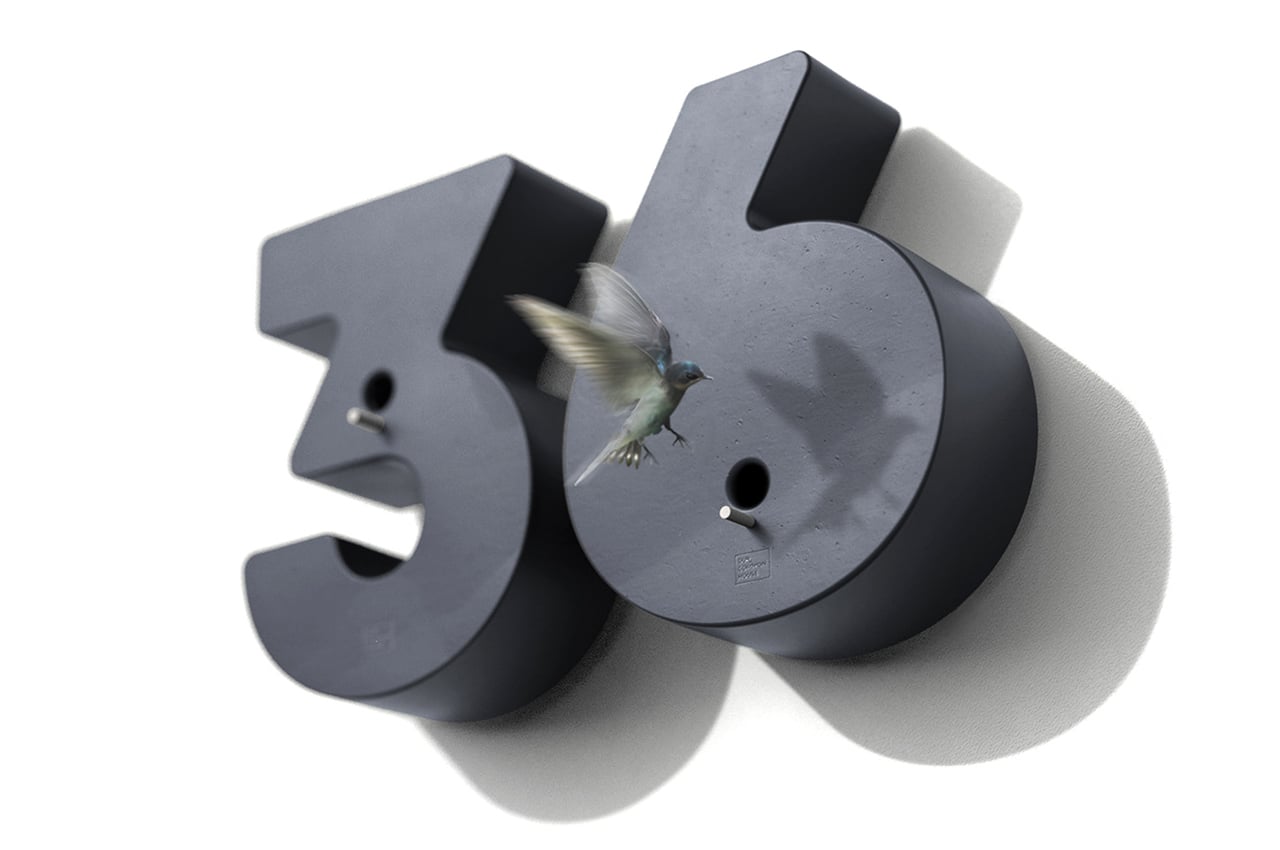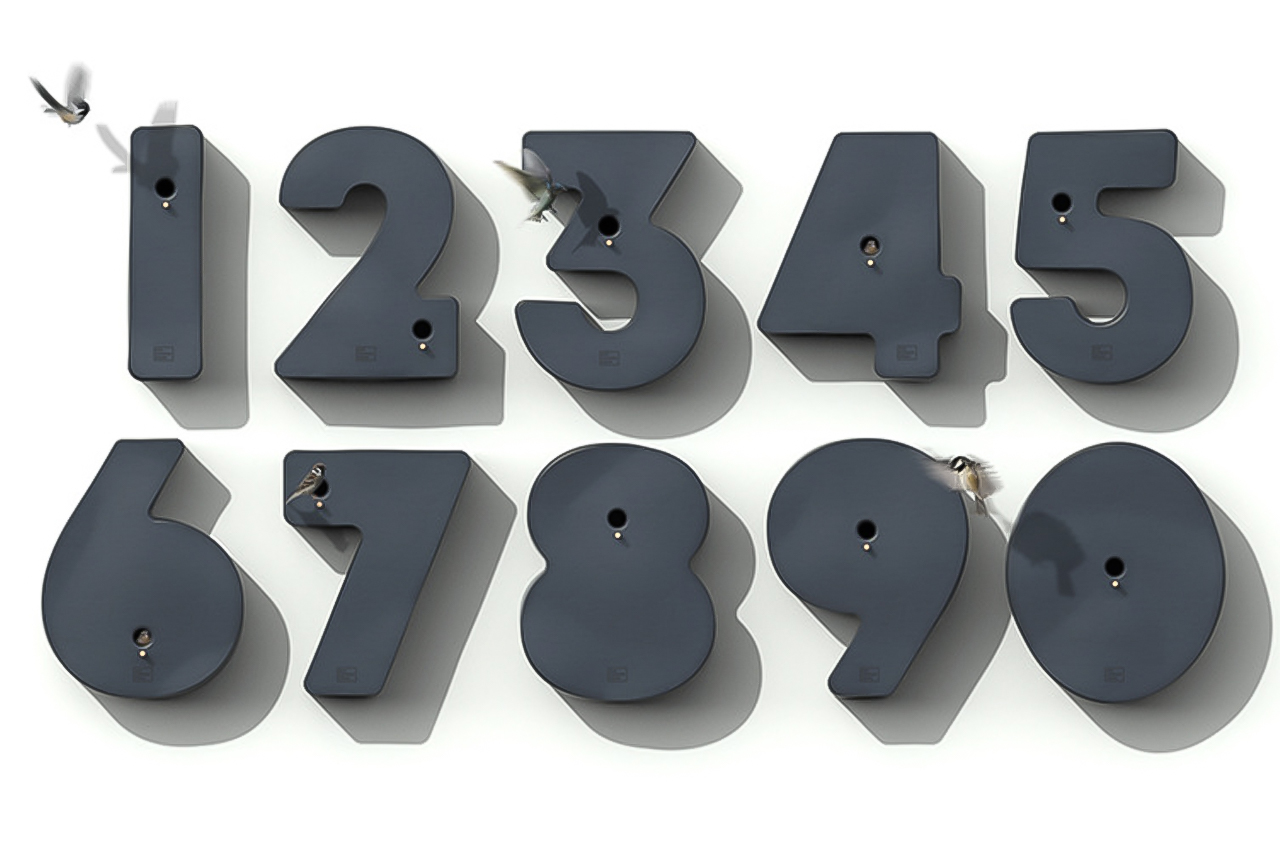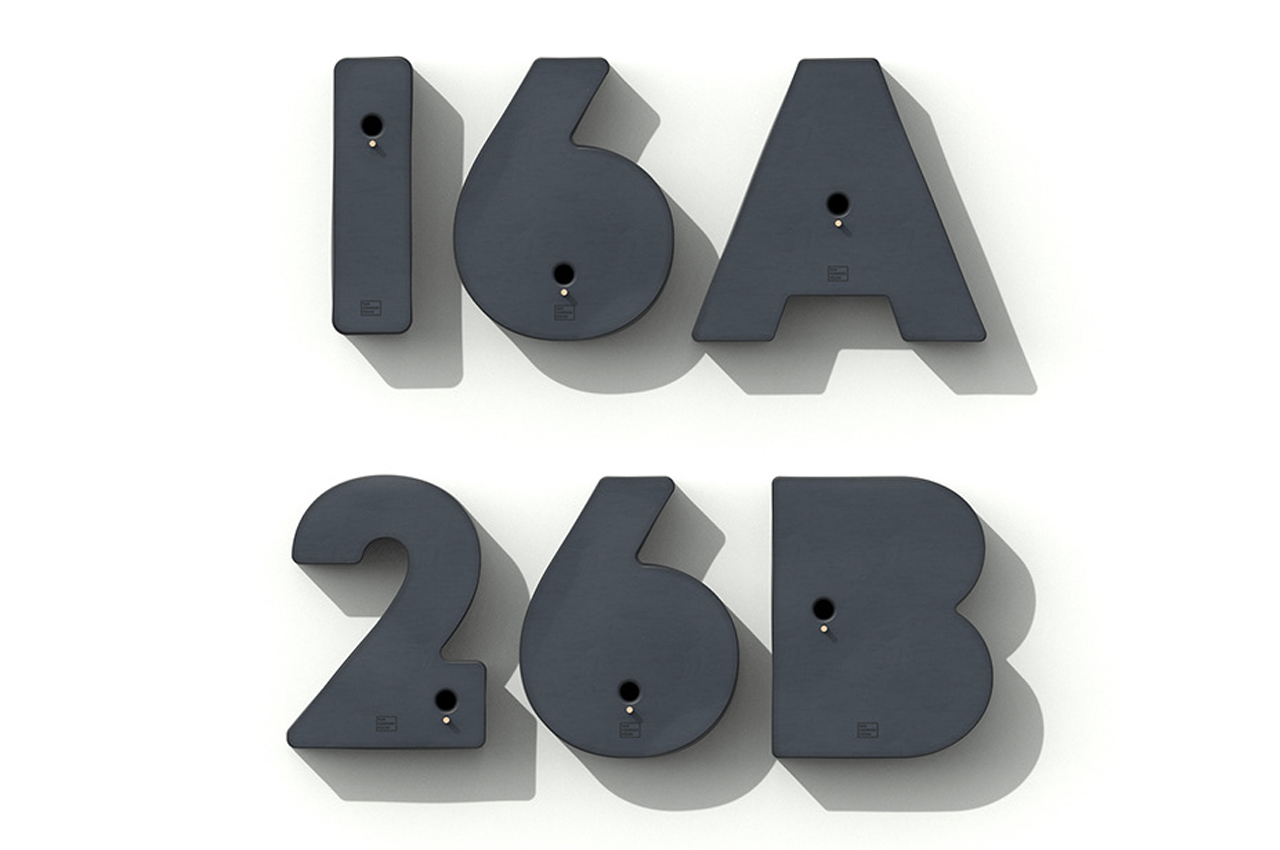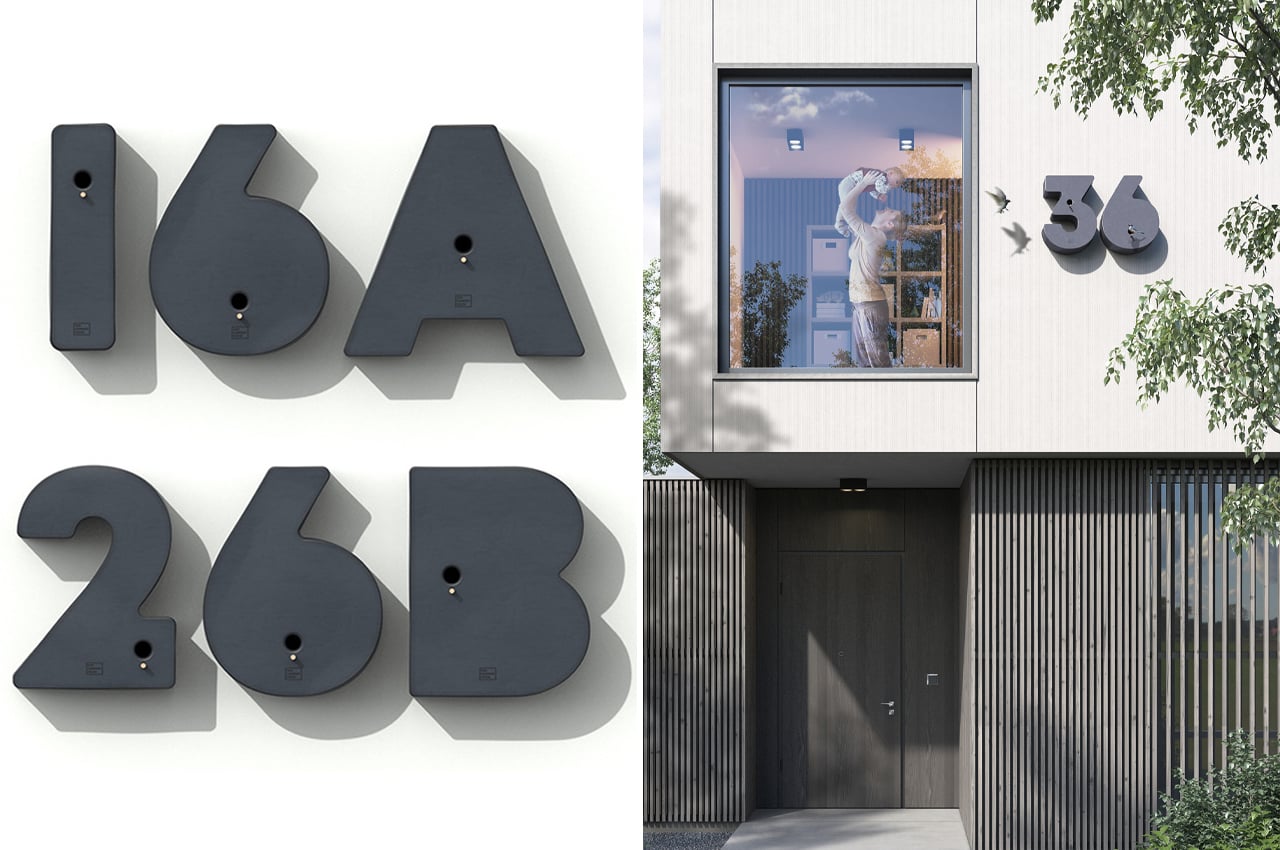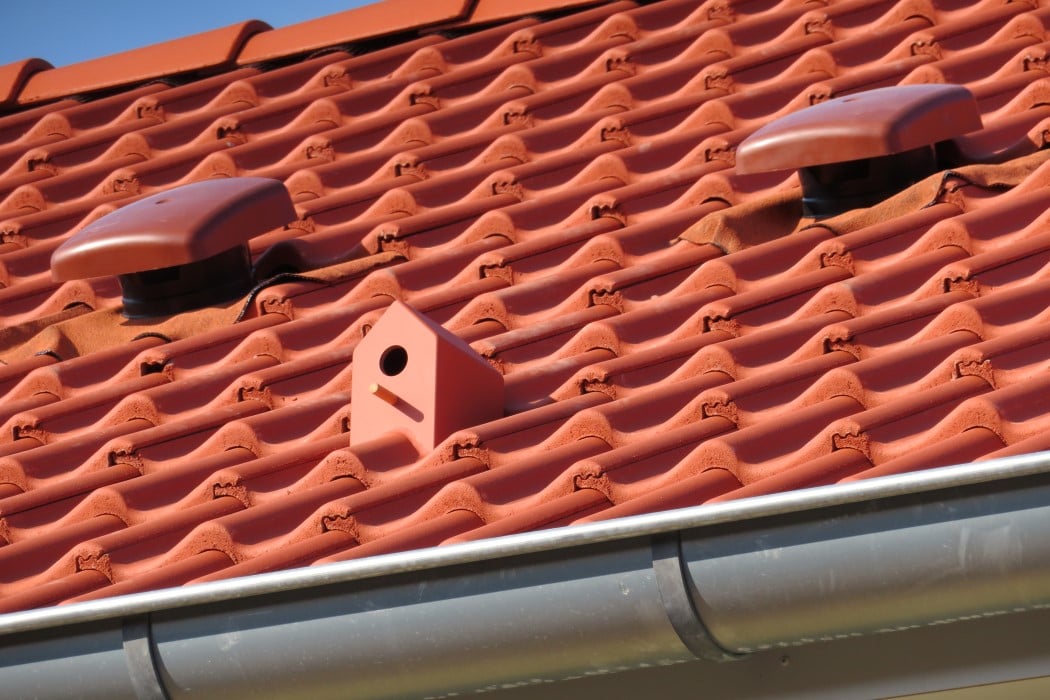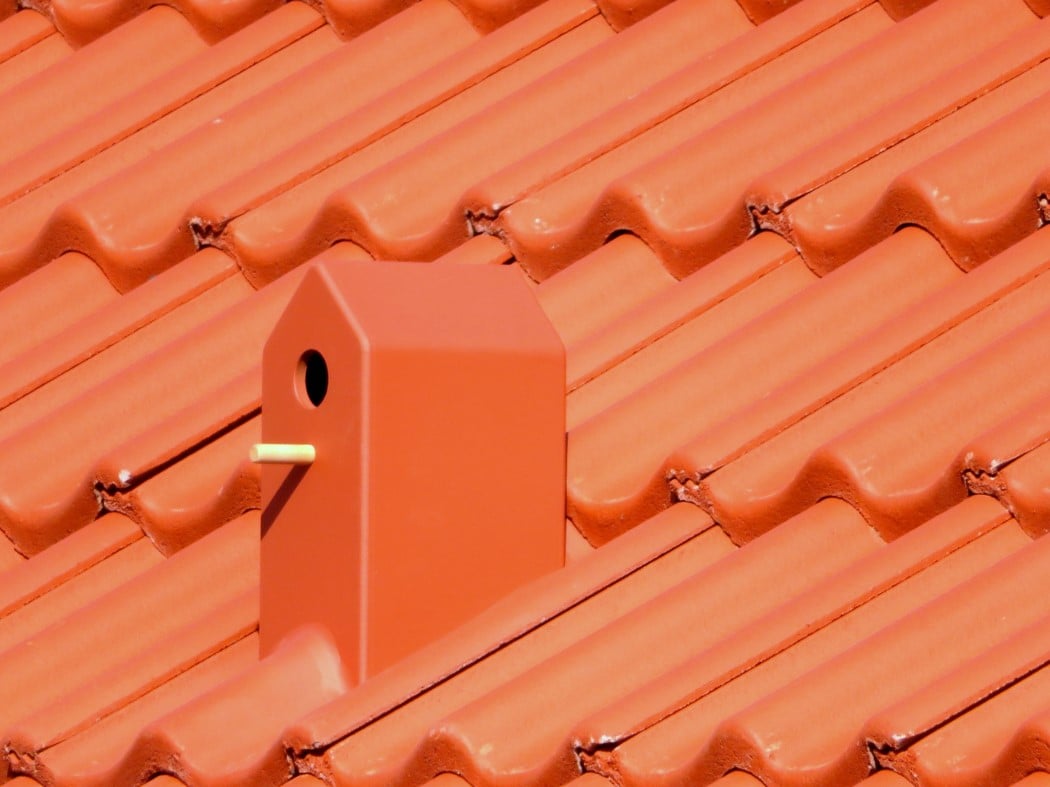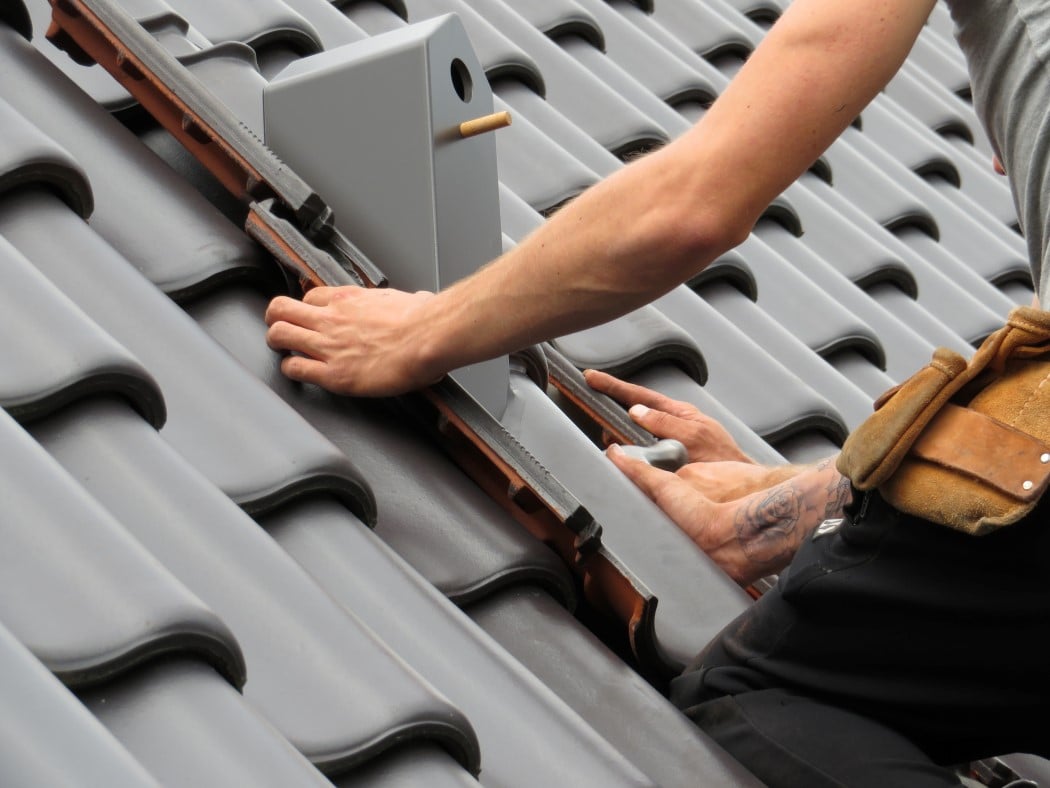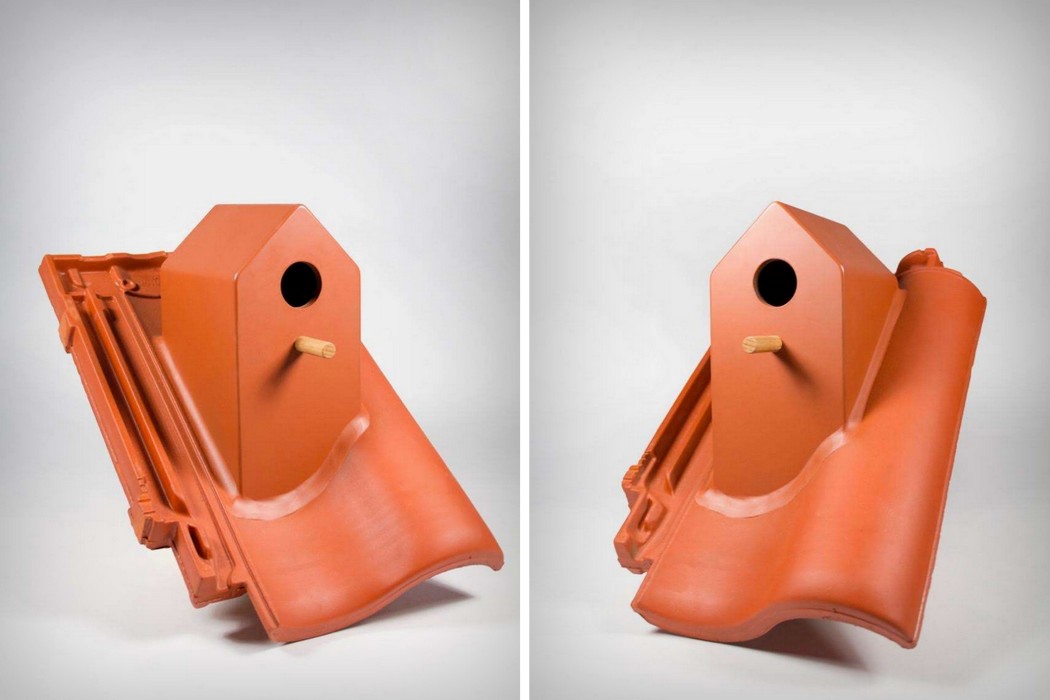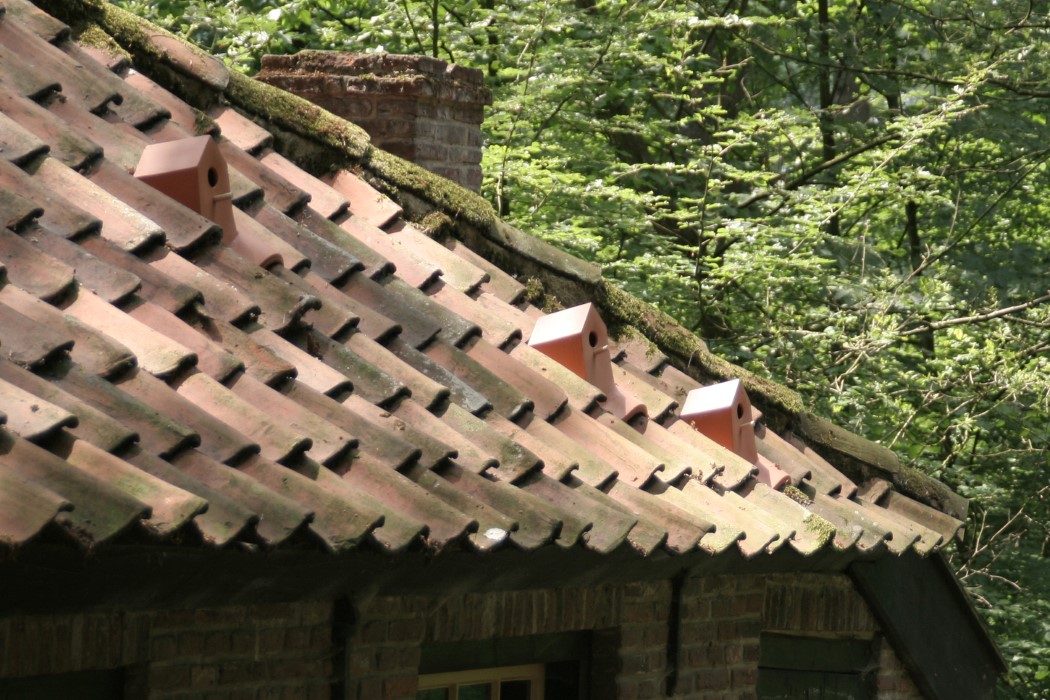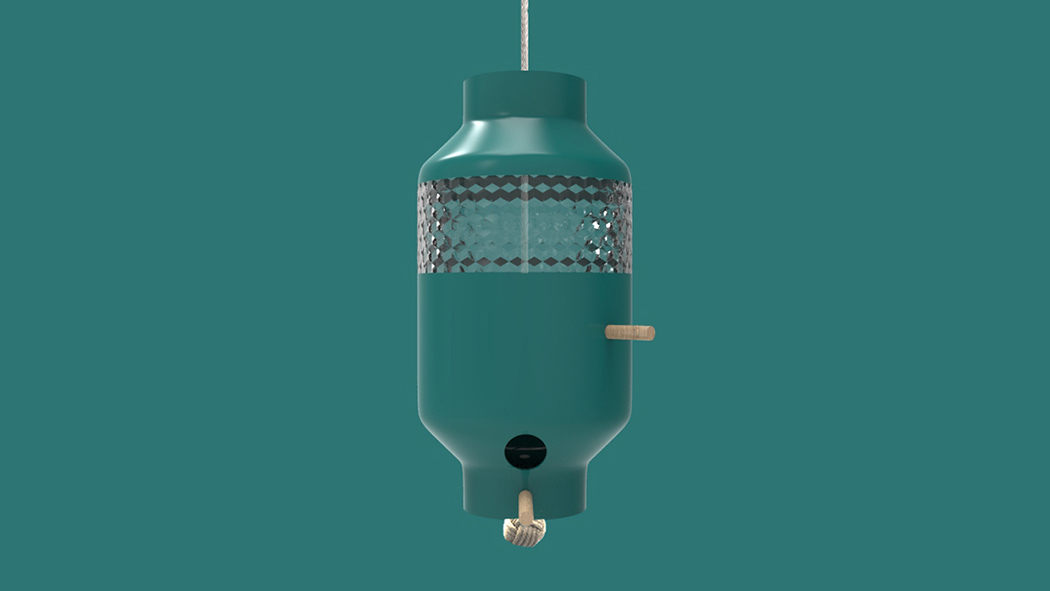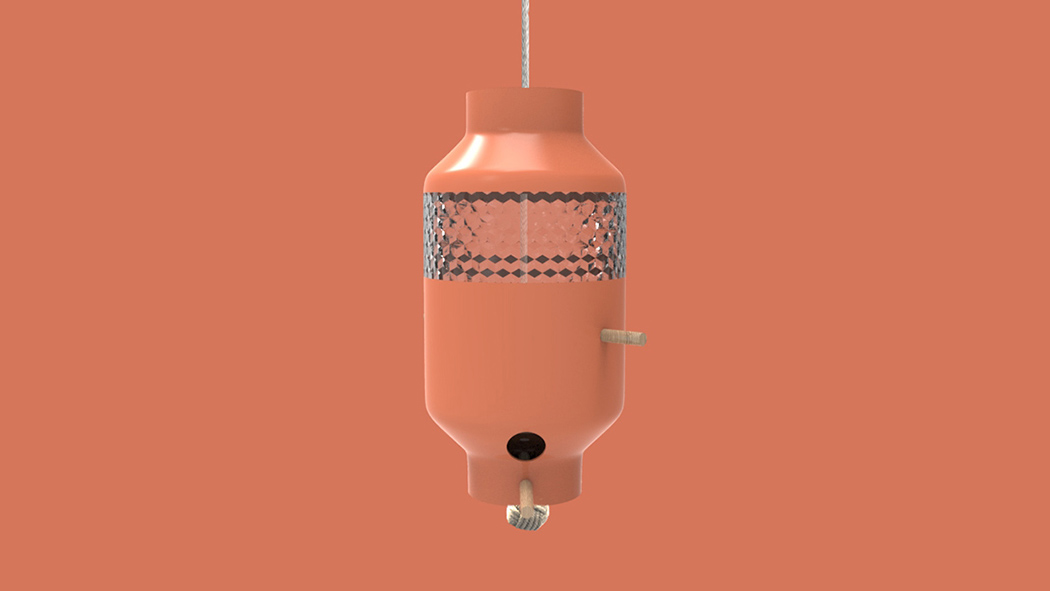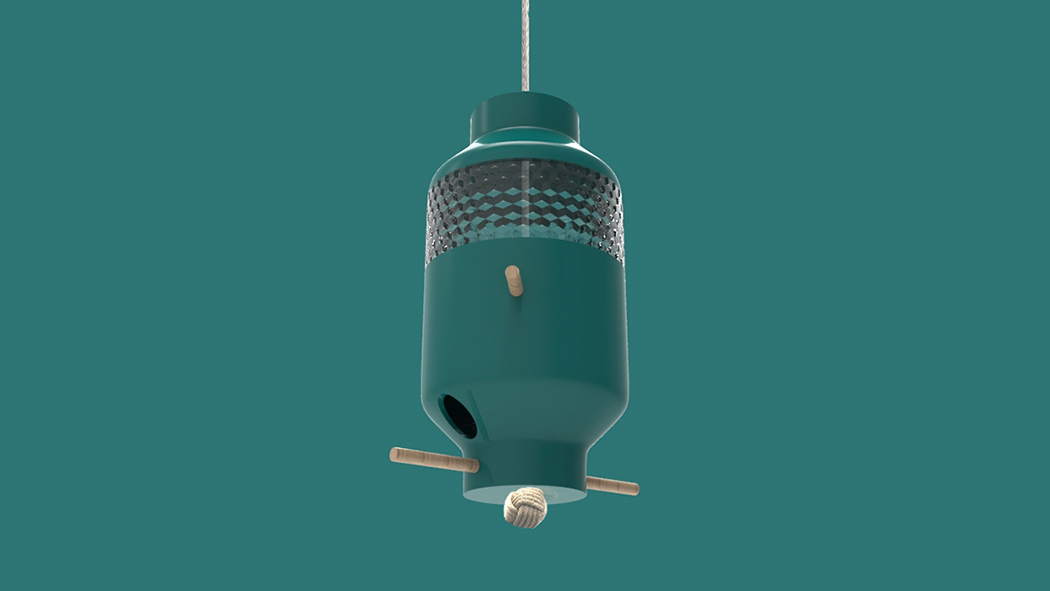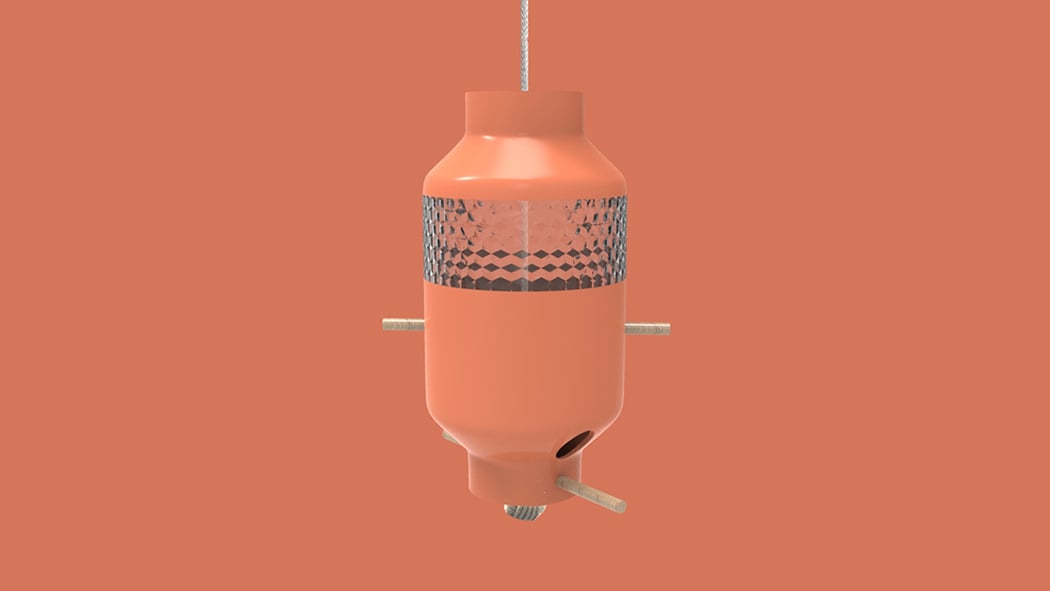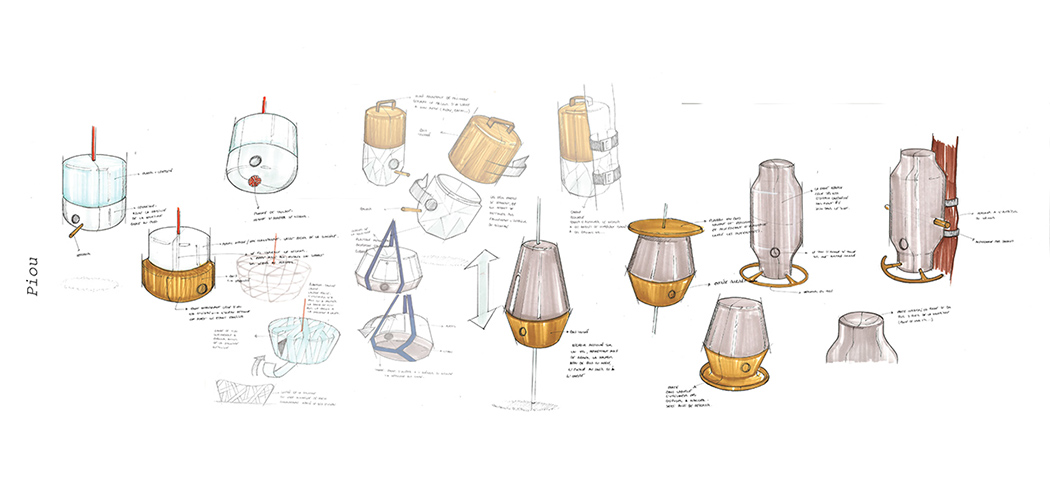
One of the more interesting and “interactive” ways we can commune with nature is by observing birds. There’s a reason why there are a lot of birdwatching groups and bird watchers themselves, even though it’s not always a hobby for everyone. While most of the time birds are observed in their natural habitat, there are also times when helping them nest in birdhouses is needed, especially during harsh weather.
Designer: Siberian Design Centre


Domik Ptashki is a wooden birdhouse that was especially designed to be attractive to both birds and humans but be as close as possible to the natural habitat and also be environmentally safe. The round shape is designed to resemble the natural tree hollow which birds take shelter in at times and also to reduce the impact of weather conditions like rain, snow, and wind. Its tophole also has a deep cylindrical shape to protect them from other predatory animals.



Because it has a low centre of gravity, the birdhouse can be fastened between the branches of a tree without the danger of damaging the tree itself or needing additional fasteners. It doesn’t have sharp corners that may harm the birds and it is also less visible in its natural environment. It is also made from natural materials and impregnations and can be assembled and disassembled easily.



The Domik Ptashki is meant to be used by humans to not just protect the birds but also take the position of an ornithologist. The designers recommend studying what’s the best place to put the birdhouse in and also comes with instructions on what to do with it once the birds leave this particular nest. It is meant to be used in places like gardens, parks, and personal plots so the minimalist design lets it blend seamlessly into the background.




The post Birdhouse lets budding ornithologists interact safely with the birds first appeared on Yanko Design.








